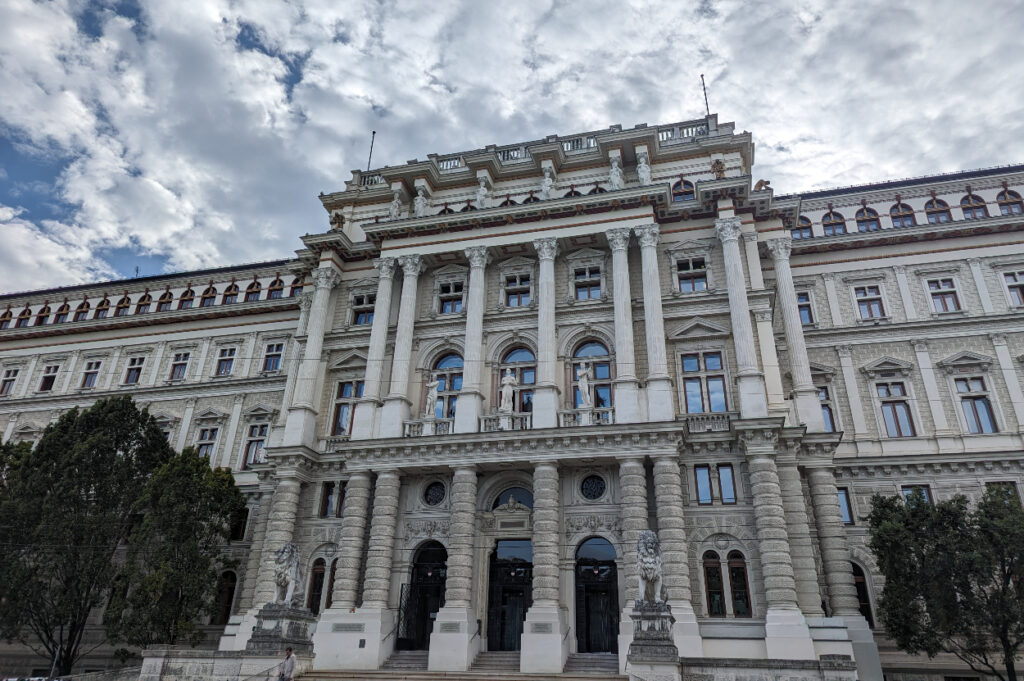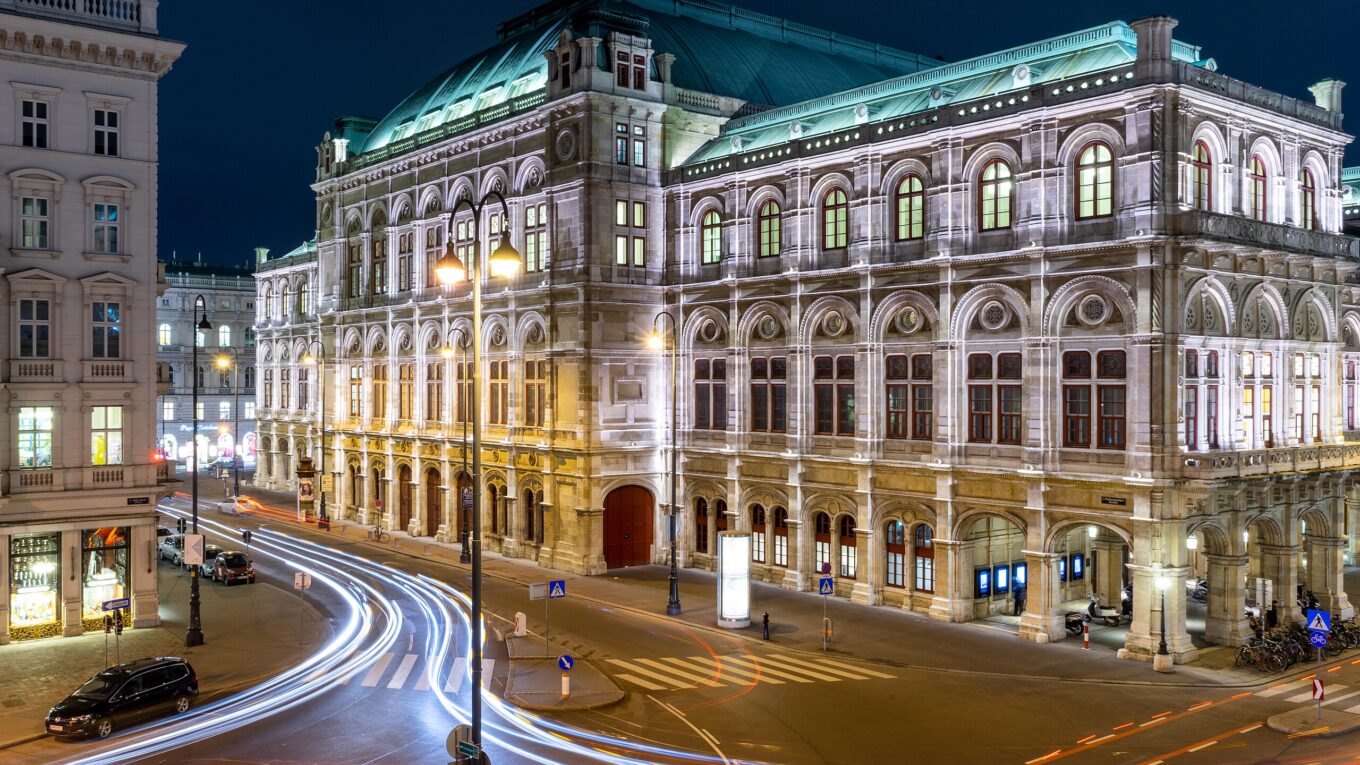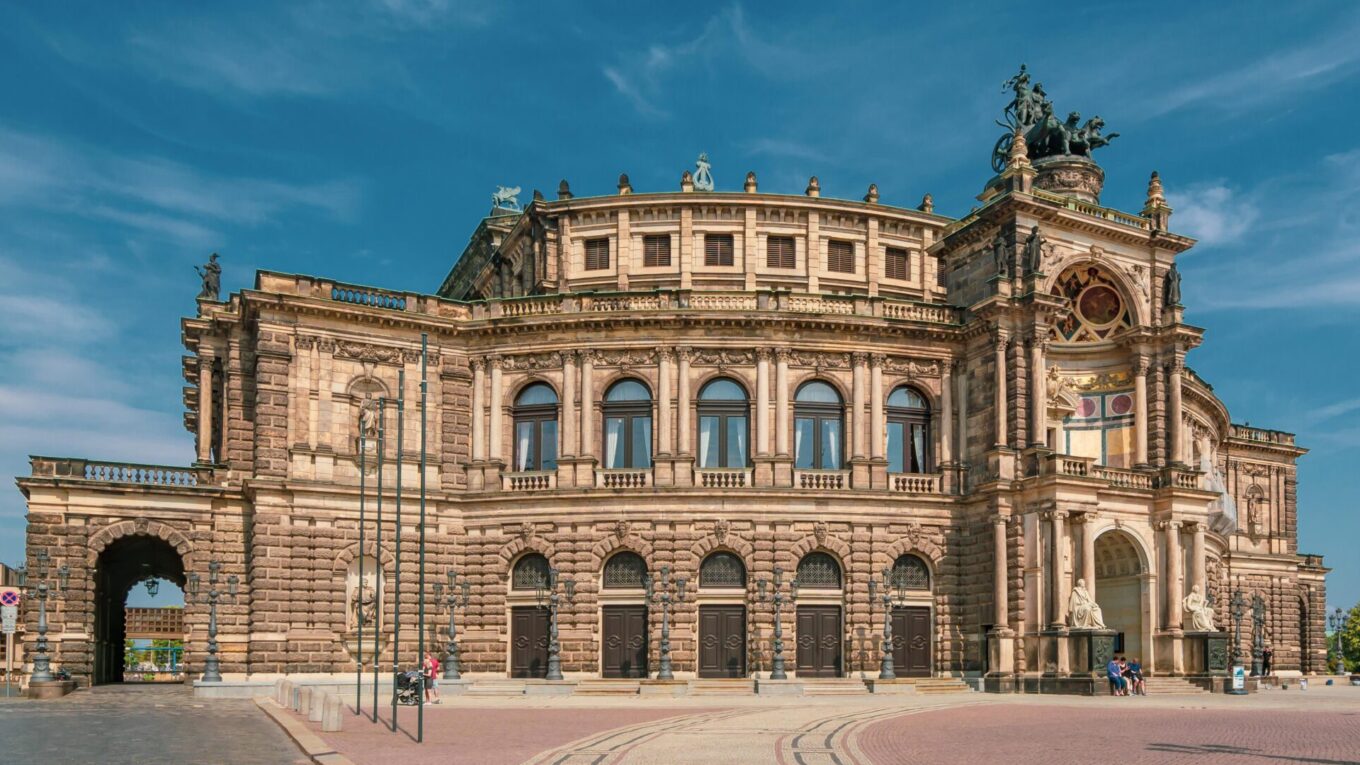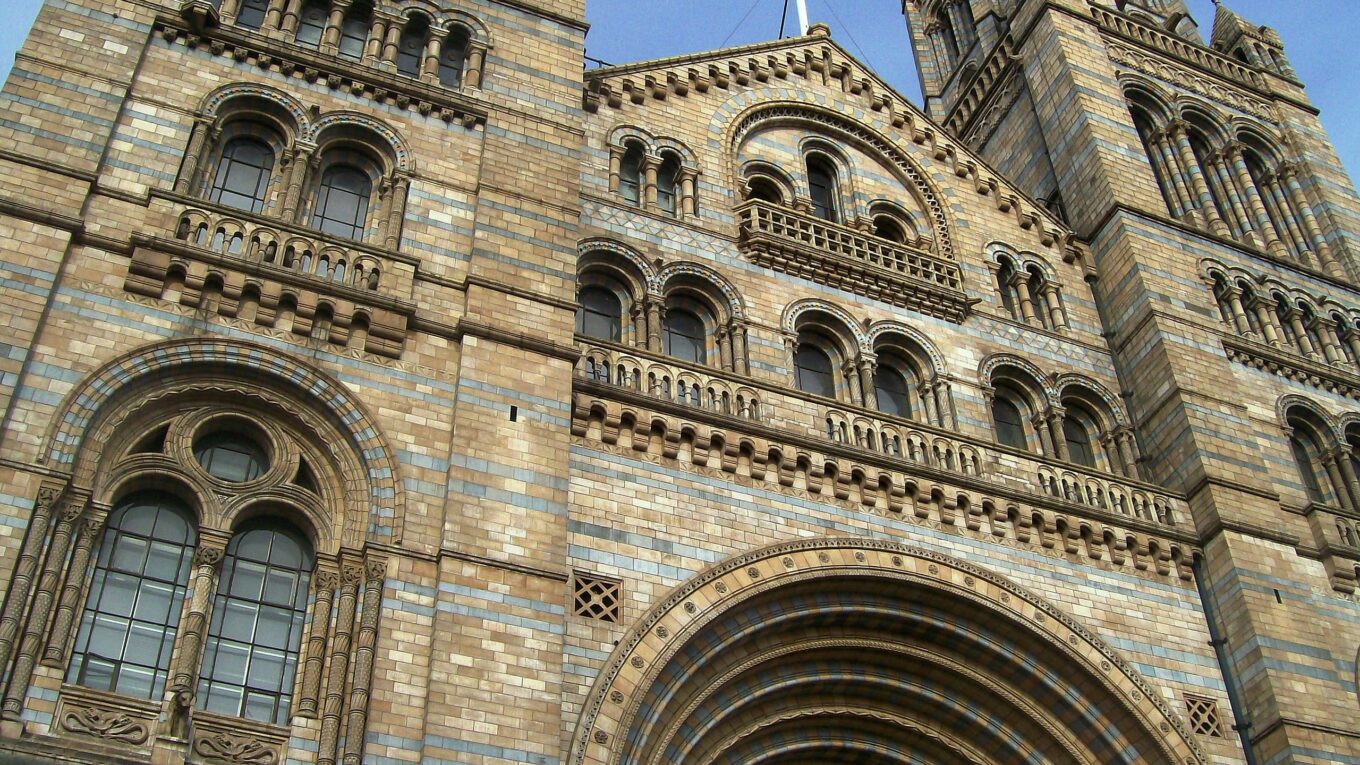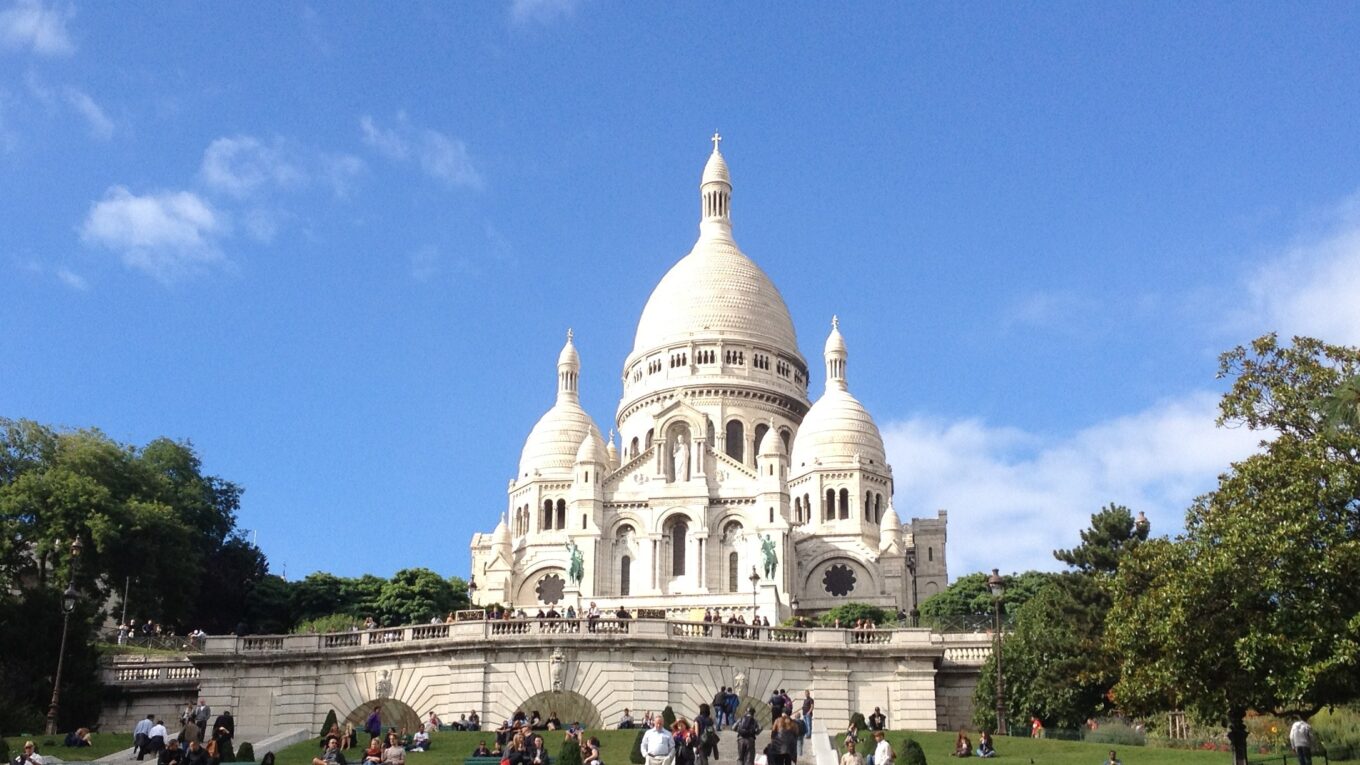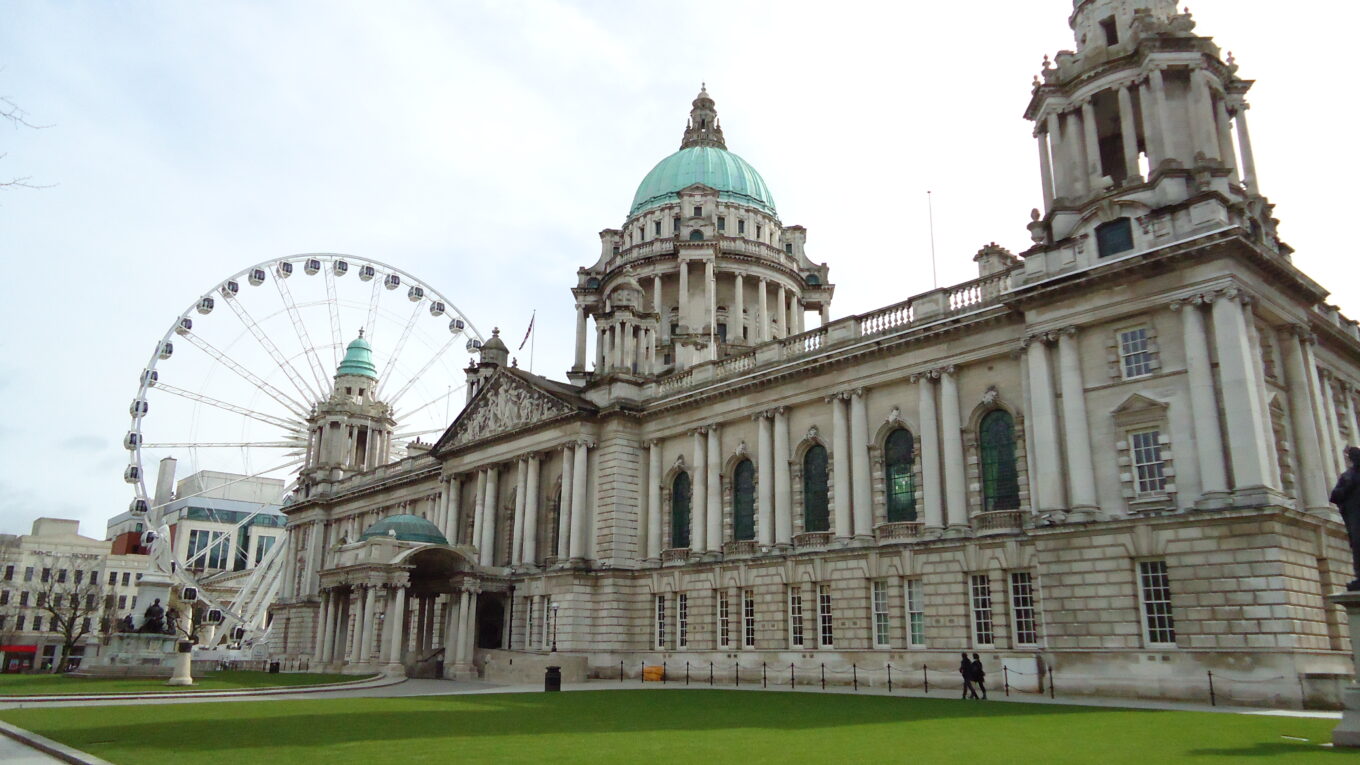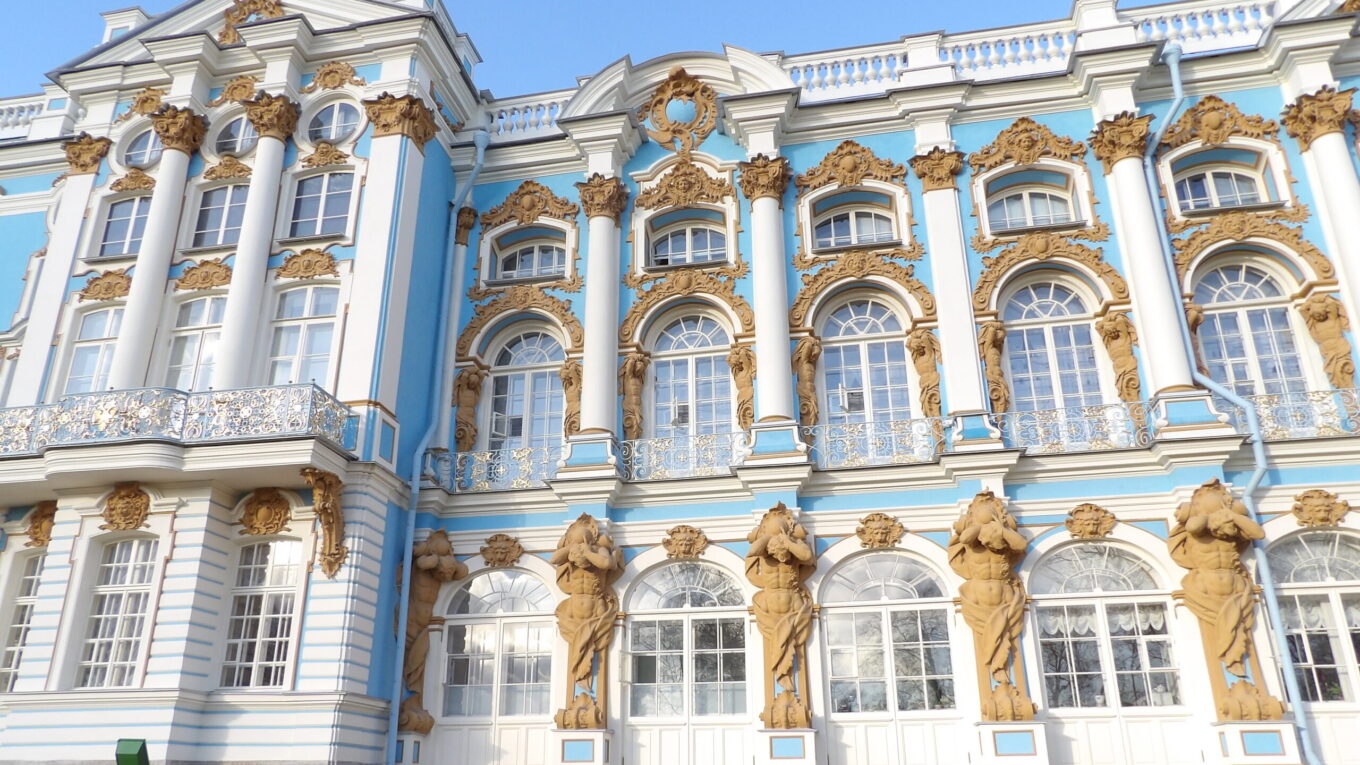Top 25 Examples of Renaissance Revival Architecture
Renaissance Revival Architecture, which is often referred to as NeoRenaissance Architecture, was a building style that was popular during the Revival Period. The Revival Period was an architectural age focused on recreating the historic buildings of the past. Renaissance Revival Architecture mimics the buildings of the Renaissance, which was an art movement that began in Florence during the 1400s. Renaissance Revival Architecture was a key component in the Revival Era, and today many examples of NeoRenaissance Buildings can be found all over the world. The list below will highlight 25 of the world’s greatest examples of Renaissance Revival Architecture, and take a deep look at the history and characteristics of this important style.
When was the Renaissance Revival Period?
The Renaissance Revival period was a movement in architecture that emerged in the mid-19th century and continued up until the early 20th century. It was part of a larger movement known as the Revival Period.
There are many different styles of Revival Architecture, but they all revolve around the same theme: replicating the buildings of the past and redesigning them in a new way.
Renaissance Revival Architecture coexisted alongside other revival styles, including NeoByzantine, NeoRomanesque, Neoclassical, NeoGothic, and NeoBaroque.
Eventually, during the 1920s and 30s, other more fluid and sculptural building forms became popular including Art Nouveau and Art Deco Architecture.
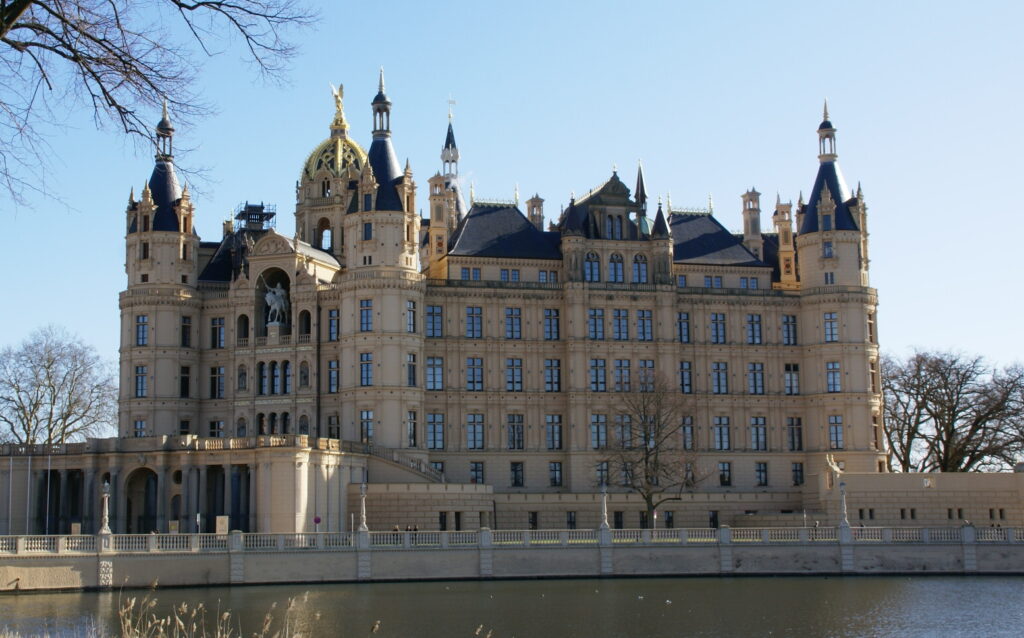
What was the Renaissance?
The Renaissance was a cultural movement that began in the mid-15th century. It originated in Florence before quickly spreading to other parts of Italy, and on to the rest of Western Europe. Some of the world’s most famous artists and architects were active during the Renaissance Period such as Filippo Brunelleschi, Donatello, Michelangelo, and Leonardo da Vinci.
The image below shows the dome of Florence Cathedral. Today it’s regarded as a marvel of Renaissance Architecture and Engineering, and it’s one of the initial projects that kicked off the age of the Italian Renaissance.
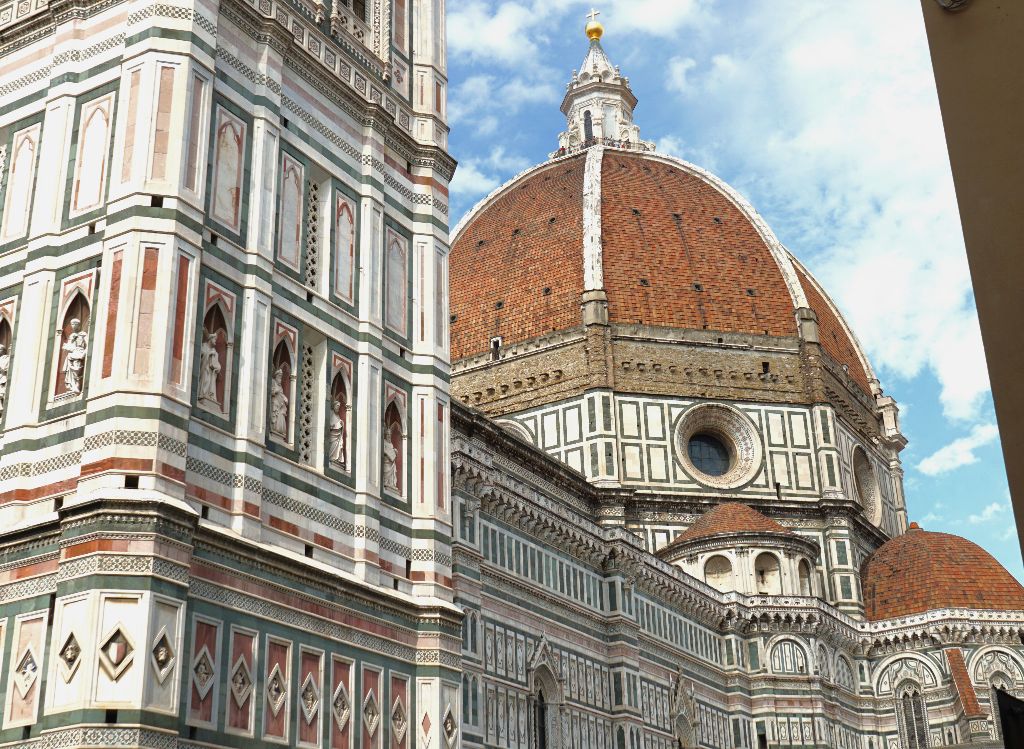
Many of the same design elements found throughout the buildings of the Renaissance were also utilized and repurposed during the Renaissance Revival Period. Big ideas from the Renaissance such as symmetry, proportion, and hierarchy, were also used extensively throughout the Revival Period of the 19th century.
What’s the difference between Renaissance Revival Architecture and NeoRenaissance Architecture?
There is no difference between NeoRenaissance Architecture and Renaissance Revival Architecture, and the terms are often used interchangeably. Virtually all of the styles from the Revival Period in Architecture can be described in this manner. (Ie…NeoRomanesque vs. Romanesque Revival and NeoGothic vs. Gothic Revival)
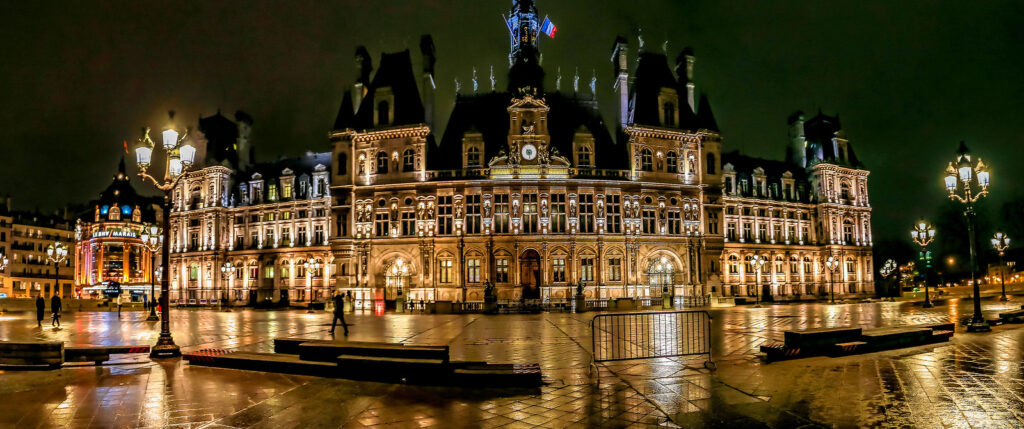
Characteristics of Renaissance Revival Architecture
The original Italian Renaissance was a “rebirth” of ideas and technologies that were lost in Europe after the fall of the Roman Empire. Many works of Renaissance Architecture borrowed elements from the buildings of the Greeks and Romans and these same features were used extensively in the Renaissance Revival Period.
Elements from Classical Architecture

One of the most widespread characteristics of Renaissance Revival Architecture is the use of elements from Classical Architecture. These include, but are not limited to: pediments, friezes, cornices, balustrades, and column capitals from the Classical Orders. (Doric, Ionic, and Corinthian) This borrowing of classical details is nothing new, and many architectural styles including Renaissance, Baroque, and NeoClassical also utilize these same features. In the image above you can see a sculptural frieze decorating the facade of the National Buildings Museum in Washington DC. Although most ancient Friezes feature men wearing robes and togas, the Friezes here show scenes from the American Frontier of the 1800s.
Symmetry
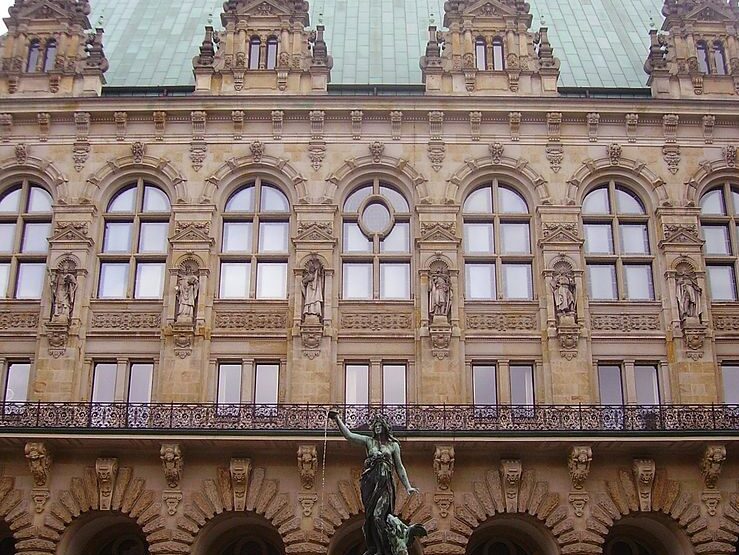
Symmetry is an important element in all architecture, but during the Renaissance, the use of symmetry became integral to the design of buildings. Many Renaissance Architects drew in both plan and section with symmetry in mind, in an effort to create more harmonious buildings. The use of symmetry in design is also very prevalent throughout Renaissance Revival Architecture. In the image above you can see the facade of Hamburg City Hall in Hamburg, Germany. Here the entire facade is symmetrical, and all of the windows, arches, and niches can be mirrored along the central axis.
Proportion & The Golden Ratio

Just like symmetry, proportions have been an important tool used by architects to help them design for thousands of years. However, during the Renaissance Age, the study of proportions became extremely critical. One of the most widely used proportional relationships is known as the Golden Ratio. The use of the Golden Ratio can be found in many of the iconic buildings from the Renaissance. The study of proportion was also integral to the Renaissance Revival Movement. In the image above you can see the exterior facade of the National Theater of Prague. Here the different floors have windows of varying sizes, but the proportions are constant and well-balanced.
Rhythm & Repetition
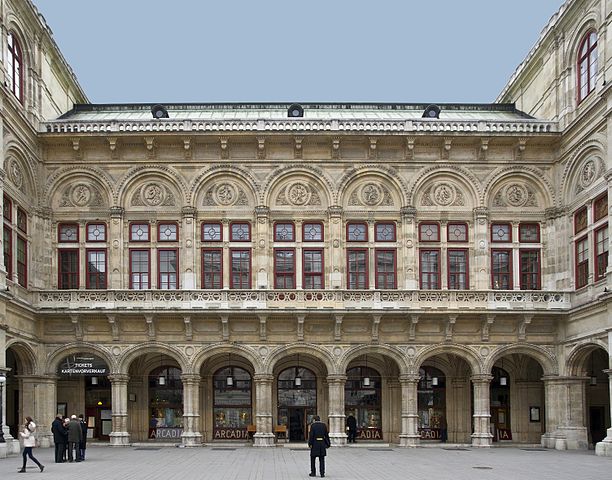
Rhythm and Repetition are two other key design features in both Renaissance Architecture and Renaissance Revival Architecture. Of course, these ideas can also be found in other architectural styles, but the use of Rhythm and Repetition is much more integral in Renaissance Design. In the image above you can see a portion of the facade of the Vienna State Opera House. These same arches and windows wrap the entire structure, and they are repeated throughout all of the floors of the building.
Bold & Simplified Forms
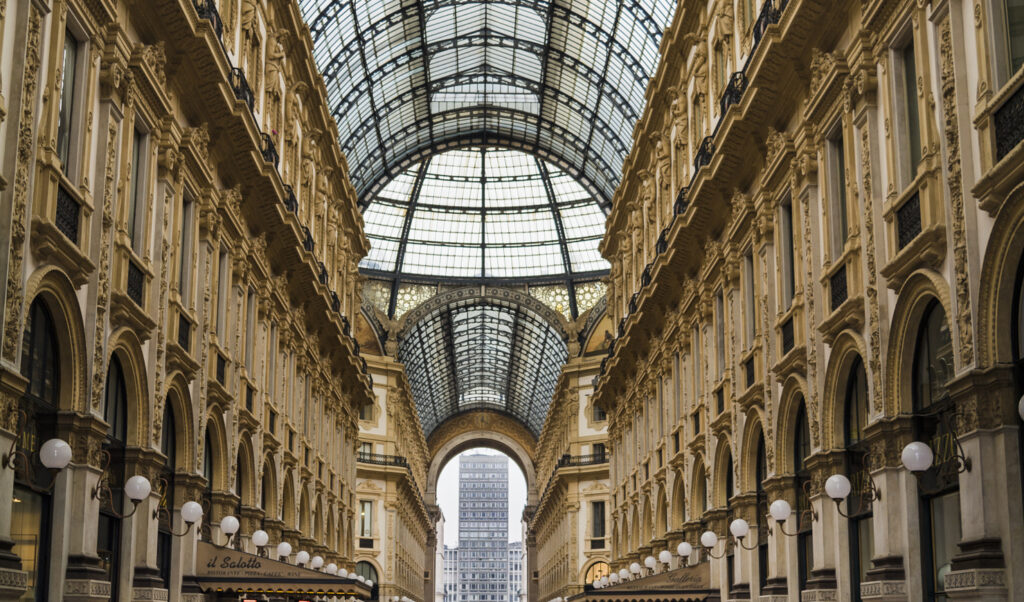
Another key idea behind Renaissance Revival Architecture is the use of bold and simplified forms. Renaissance designs use a lot of round arches, circles, triangles, and rectangles to create buildings that are practical and economical. While Gothic and Baroque buildings often contain intricate details and complex geometries, Renaissance Buildings tend to be more stern and rigid with little intricacy. In the image above, you can see a great example of this at the Galleria Vittorio Emmanuele II in Milan Italy. Here, the entire design revolves around a simple cruciform arcade that’s lined with a repeating series of arches and windows.
Renaissance Sculptures
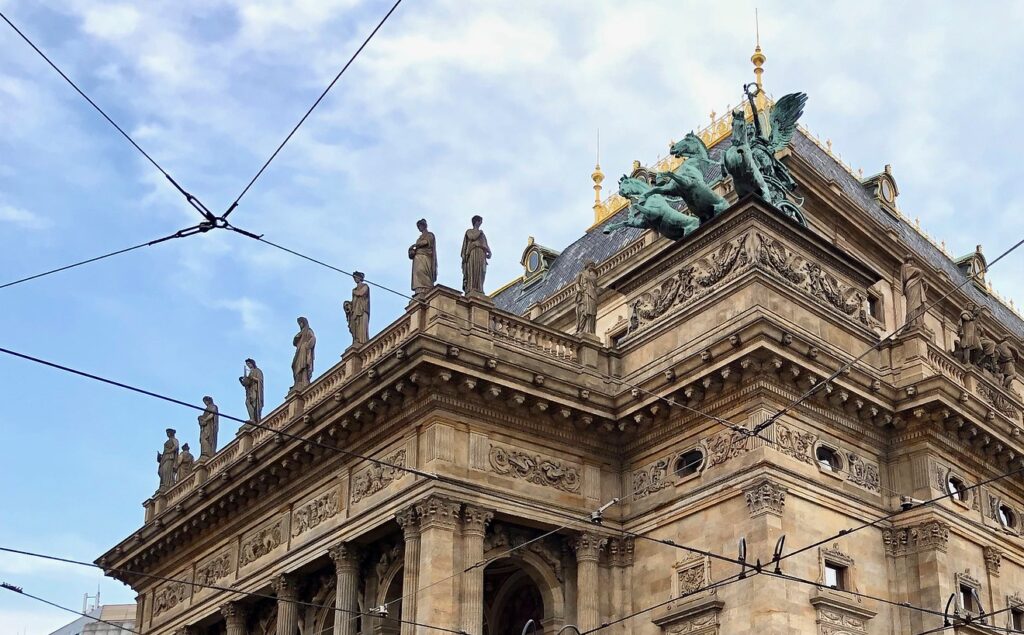
Renaissance Sculptures can also be found decorating many examples of Renaissance Revival Architecture. Sculpture was an important art form in the Renaissance Movement, and Michelangelo’s famous David is one of the most iconic artworks in the entire world. Similar-styled sculptures can be found decorating the facades and rooflines of many Revival-era buildings. The image above shows several Renaissance Sculptures decorating the National Theater in Prague, Czech Republic.
What are the Greatest Examples of Renaissance Revival Architecture?
Renaissance Revival Architecture was one of the key typologies within the overall Revival Movement. The list below will highlight 25 of the World’s Greatest Examples of Renaissance Revival Architecture, and provide an in-depth look at the history and importance of the Neo Renaissance Style.
1. Vienna State Opera – Vienna, Austria
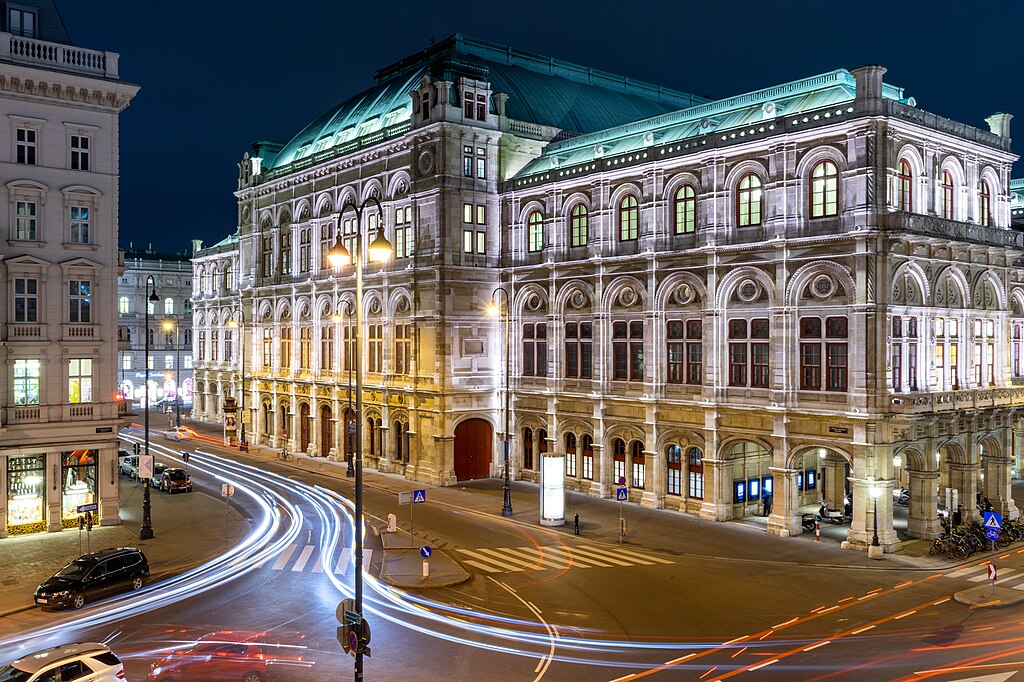
Vienna is a prominent city in Central Europe, and it was once the capital of the mighty Austrian Empire. Up until the 19th century, the city was completely encircled by a ring of defensive fortifications. But, in an effort to help Vienna expand, these walls were torn down and subsequently replaced by a ring of parks, prominent buildings, and a major roadway. This ring of development is known as Vienna’s Ringstrasse, and it’s filled with dozens of impressive Revival-era buildings. One of the most prominent structures along the Ringstrasse is the Vienna State Opera House.
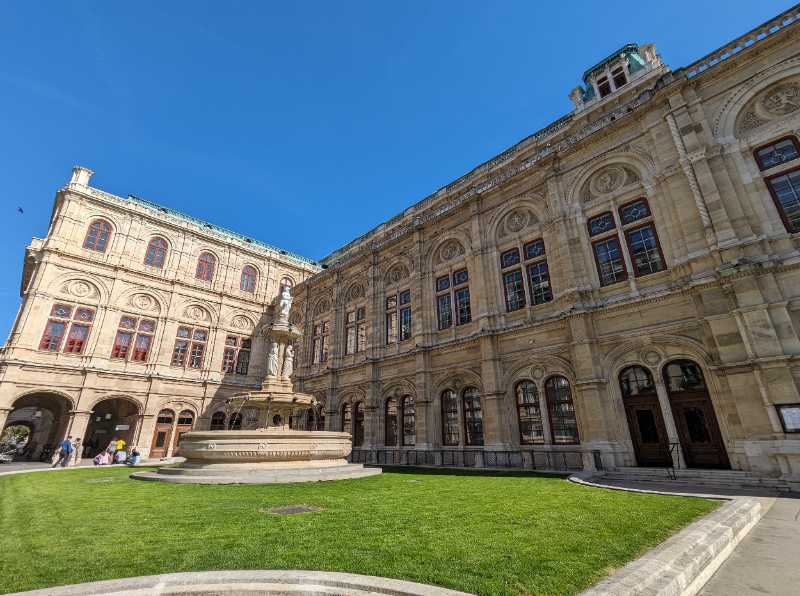

Designed in the Renaissance Revival Style it features all of the iconic elements found in Renaissance Architecture. There is great use of symmetry, proportion, and rhythm within the exterior. Most of the Facade is decorated with uniform repeated geometries. The simplified color pallet is another feature borrowed from many Renaissance buildings. Today Vienna is known for its abundance of arts and culture, and the State Opera House is one of many performing arts venues within the city.
2. Hamburg City Hall – Hamburg, Germany

Constructed from 1886 to 1897, Hamburg City Hall is one of Germany’s greatest examples of Renaissance Revival Architecture. It houses the local government for the city of Hamburg, and its 367-foot (112 m) tall tower looms over the Rathausmarkt within Hamburg’s city center. The main facade of the building shows the use of symmetry and repetition found throughout many works of Renaissance Architecture.
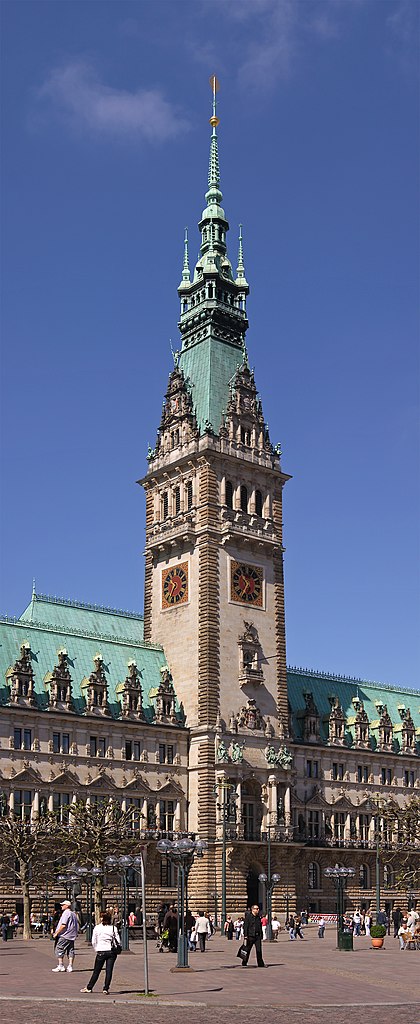
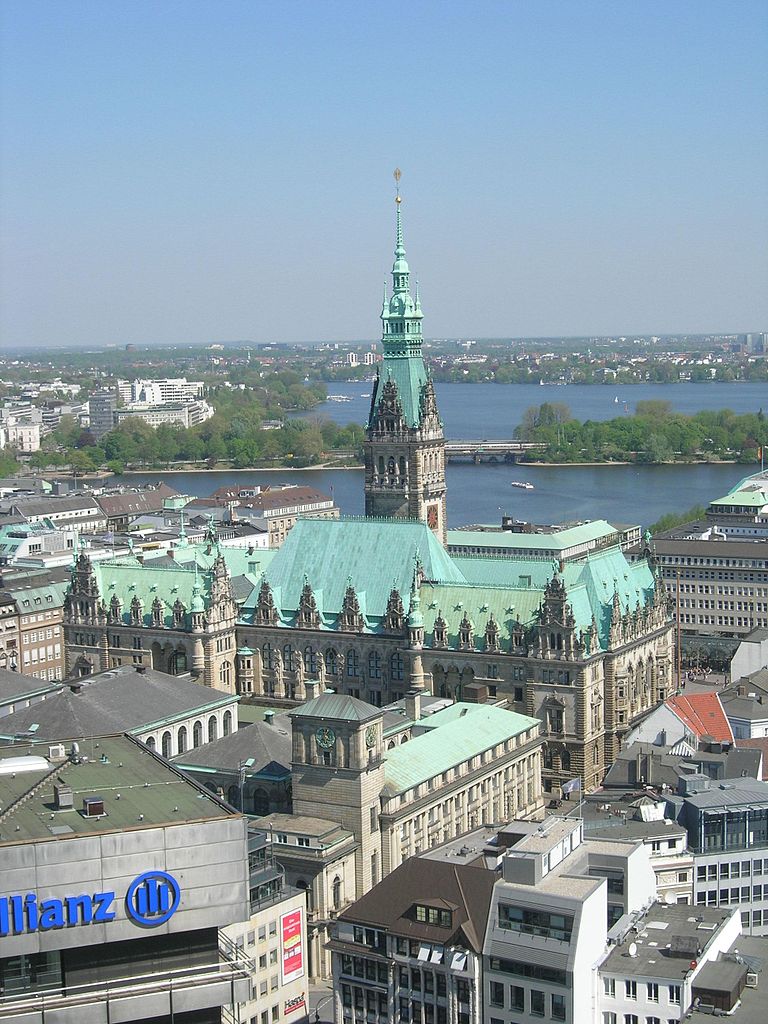
Hamburg City Hall also contains many influences from other important architectural styles. The Exterior has a few touches of Baroque Detailing, and the interior of the building has a variety of rooms decorated in the Gothic, Baroque, and Renaissance styles. Many different architects from this period in the late 19th century practiced Eclecticism, which is the art of mixing & matching different elements from various periods in architectural history. Although much of Hamburg was devasted by bombing in WWII, Hamburg City Hall has been meticulously restored, and it remains a testament to the city’s proud history.
3. Hôtel de Ville – Paris, France

The Hôtel de Ville de Paris was constructed from 1874-1882 in the Renaissance Revival Style. It replaced a much older structure that was built in 1551. The previous building was a work of Renaissance Architecture designed at the peak of the Renaissance movement in France. However, in 1871 a devastating fire destroyed the original building, and the Parisian government had to move quickly to create a replacement. City officials decided to go with a Renaissance Revival Design in an effort to connect with the previous structure.
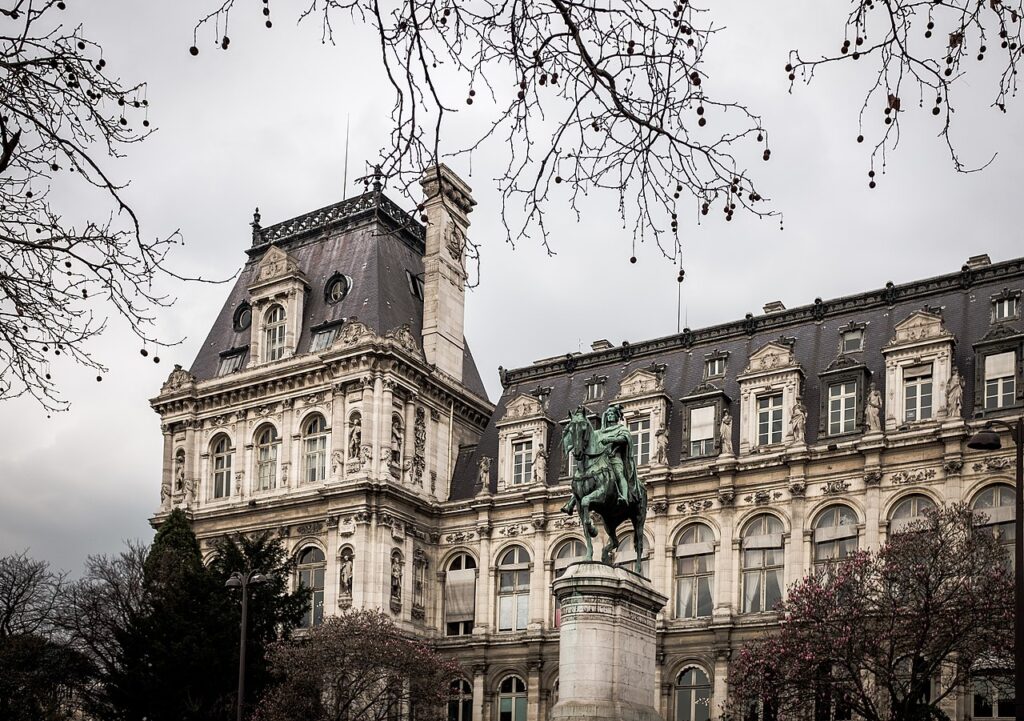
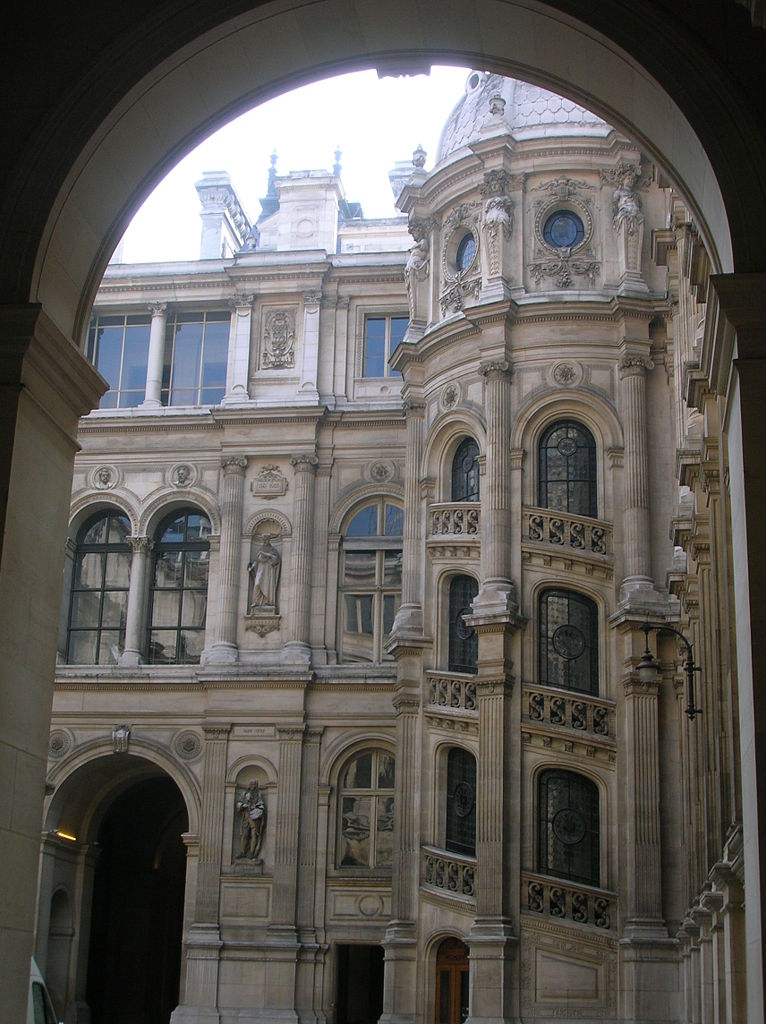
The Hôtel de Ville features all of the most iconic elements in Neo-Renaissance Architecture. There are round arches that repeat throughout the entire facade, and the use of classical column capitals and Renaissance-style statues can be seen throughout. Today the Hôtel de Ville de Paris still houses the city’s local government, and it’s among Paris’ many incredible Revival Style buildings.
4. Prague National Theater – Prague, Czech Republic
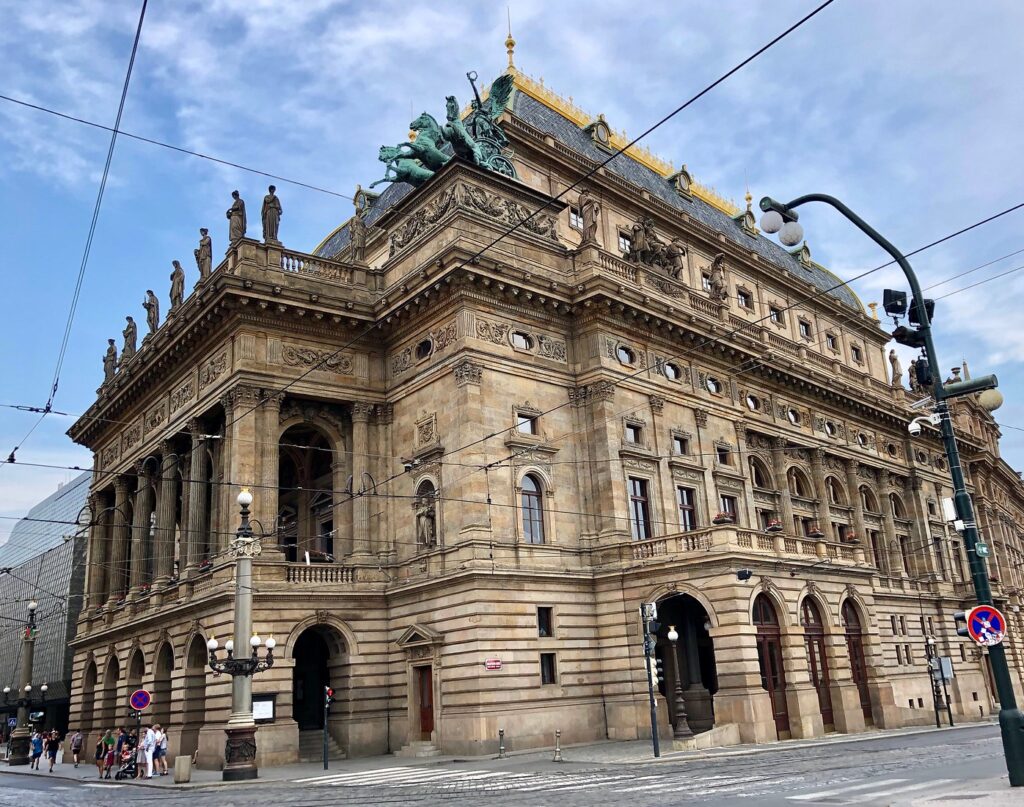
The Prague National Theater sits at the edge of the Vltava River right in the heart of Prague’s historic center. It was completed in 1881 after a lengthy process of proposals and approvals that led to its construction. The people who financed the building wanted to create a space to celebrate Czech theater and art. This was a key theme in the Czech Nationalist Movement which was becoming popular in the second half of the 19th century. The theater holds various ballet, opera, and drama events every year and it’s one of Prague’s most celebrated venues.
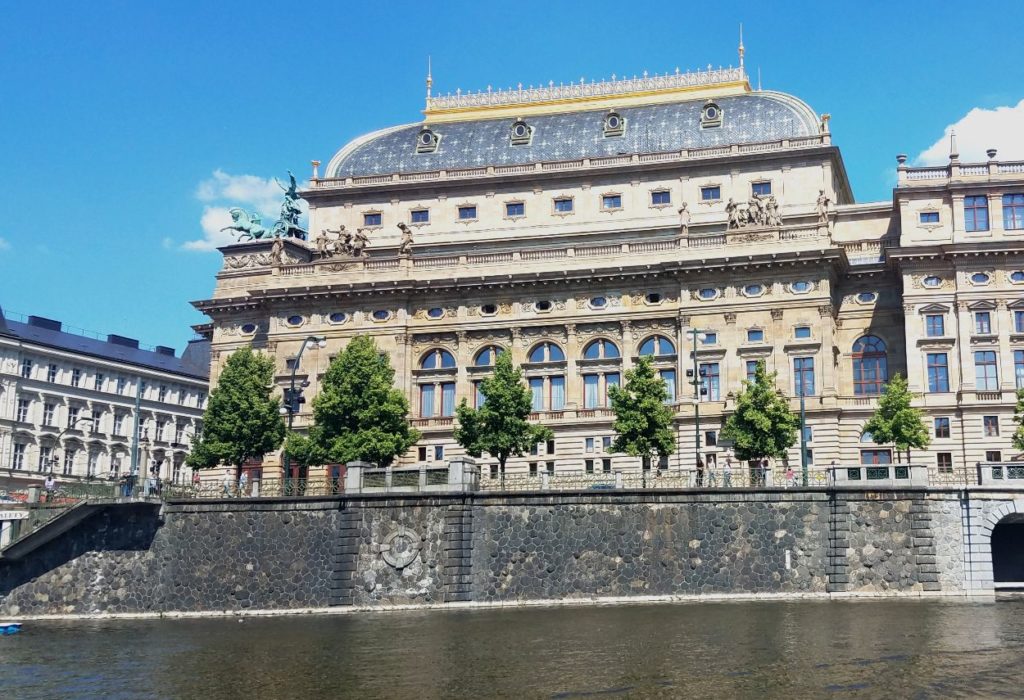
The National Theater was built at a time when Revival Architecture was popular throughout the entire city of Prague. During this period, there was a successful push to complete the remainder of St. Vitus Cathedral in the Gothic Revival Style, and several other NeoBaroque and NeoRenaissance Style buildings were built within Prague’s historic core. Together, many of these important structures became protected as part of a UNESCO World Heritage Site in 1992.
5. Mary Queen of the World Cathedral – Montreal, Canada
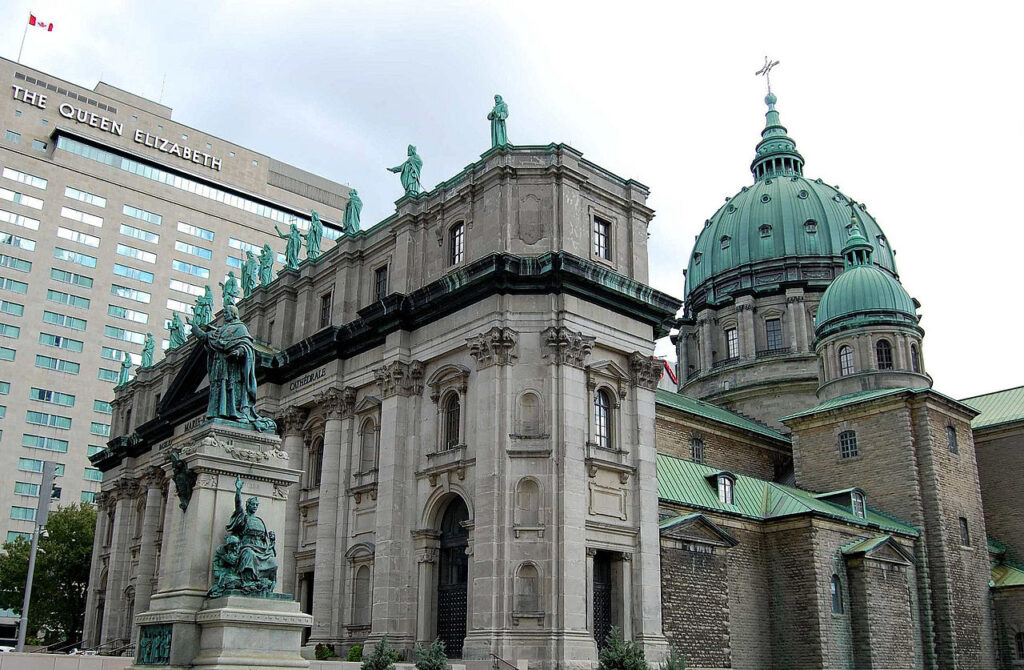
Mary Queen of the World Cathedral is a large church located in Montreal, Canada. It embodies the entire idea behind Revival Architecture: replicating the buildings of the past. Mary Queen of the World Cathedral is an almost exact replica of St. Peter’s Basilica in Vatican City. The original St. Peter’s was designed predominantly by Michelangelo in the 16th century and it’s one of the world’s greatest examples of Renaissance Architecture.
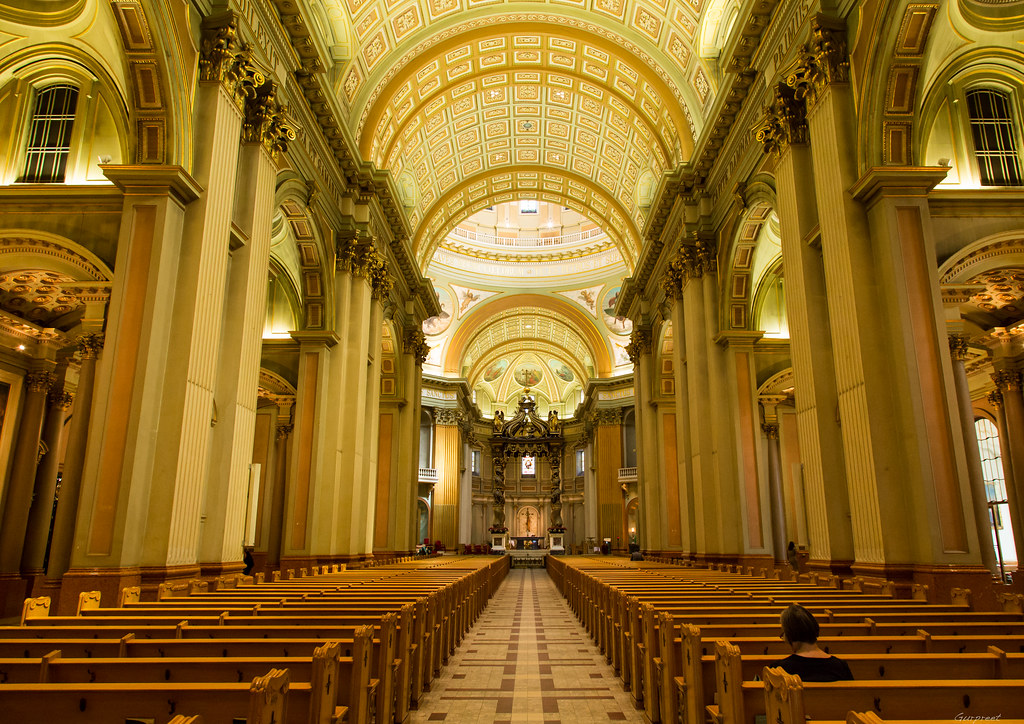
Completed in 1894, Mary Queen of the World Cathedral is similar to St. Peter’s Basilica, but it’s built on a much smaller scale. It was built to contrast the many other Gothic Revival Churches found in this part of Quebec, and it catered to the growing population of Montreal in the post-industrial age. The image above shows the church’s interior, which even contains a replica of the famous Baroque-styled Baldachin of Bernini,
6. Palace of Justice – Vienna, Austria
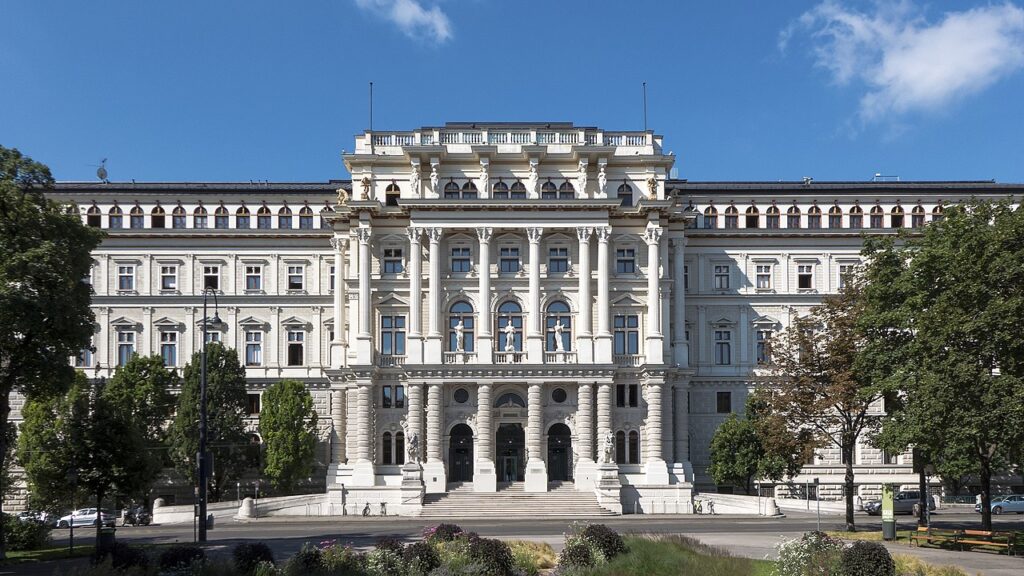
The Palace of Justice is an important municipal building in Vienna that was designed in the Renaissance Revival Style. It’s located within the Ringstrasse in central Vienna, not far from the State Opera House. The Palace of Justice features all of the typical elements found in Renaissance designs, including symmetry, repetition, and the use of proportions and the Golden Ratio. The facade of the building is also decorated with Corinthian Columns, pediments, round arches, and Classical Statues.
7. Galleria Vittorio Emanuele II – Milan, Italy
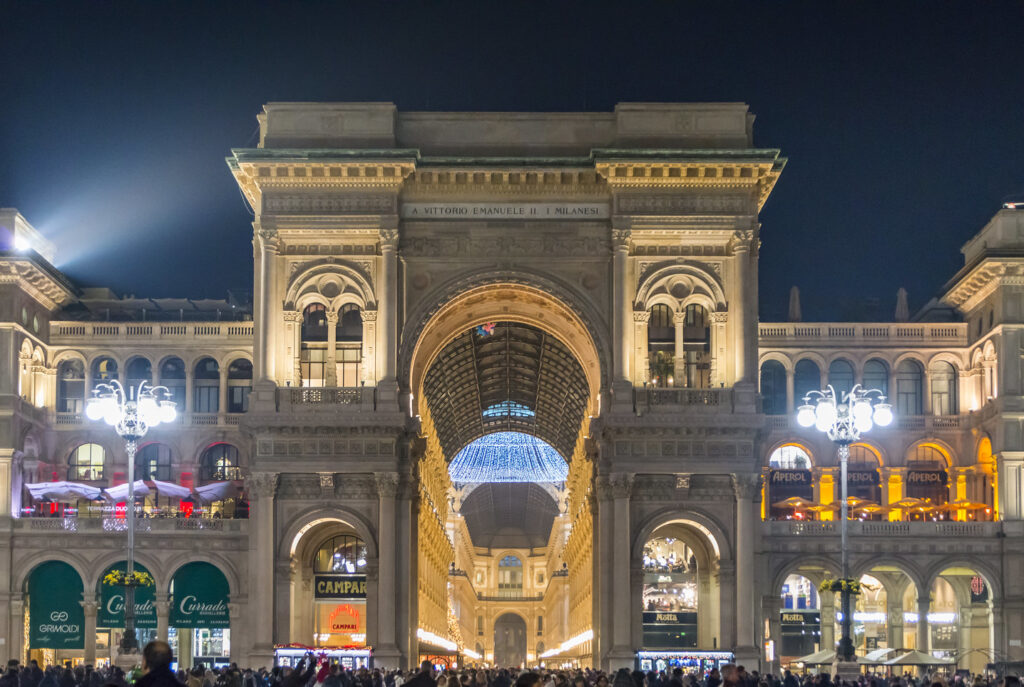
One of the greatest examples of Renaissance Revival Architecture anywhere in Italy is the Galleria Vittorio Emanuele II. It’s located in the heart of Milan, right next to the city’s famed Gothic Cathedral, the Duomo di Milano. The Galleria was completed in 1877 and is named for Vittorio Emmanuele II. Emmanuele II was the first ruler of the Kingdom of Italy, which controlled the entire Italian Peninsula beginning in 1861. The design incorporates a large Triumphal Arch, which was meant to signify Vittorio’s many military victories. Today, the Galleria is one of Milan’s most popular attractions and it contains a plethora of shops, bars, restaurants, and entertainment venues.
8. Schwerin Castle – Schwerin, Germany
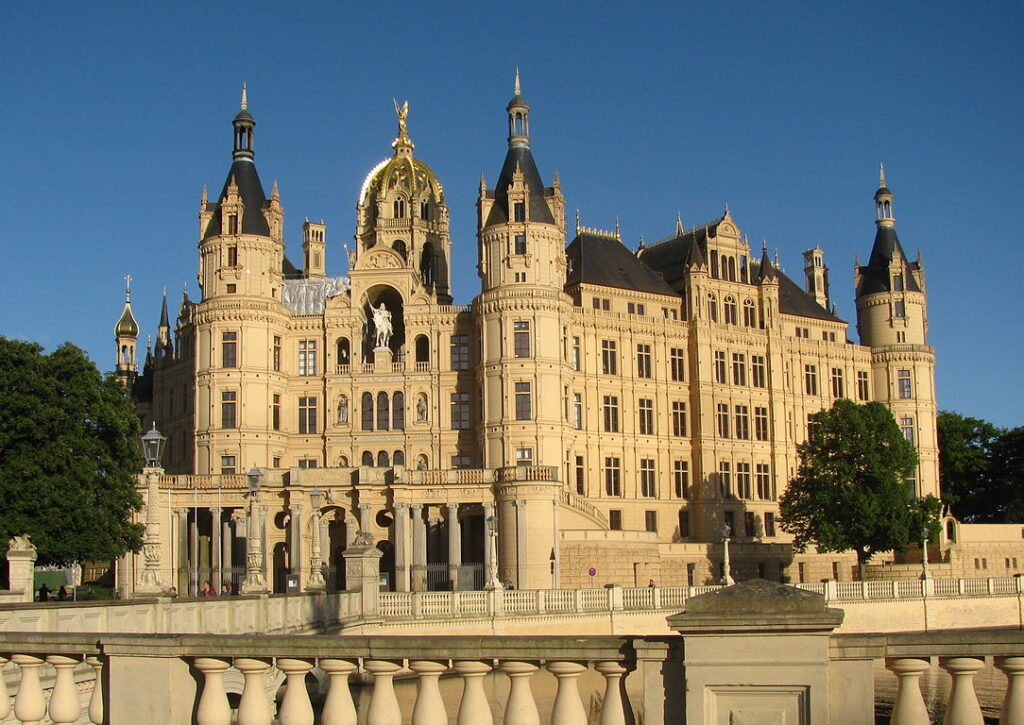
Schwerin Castle was an important medieval fortification located in northern Germany. It has a foundation dating back to the Romanesque Age of the 10th century. Like many other castles from this era, it was continuously modified and expanded over time. Eventually, in the mid-19th century, a large expansion project was completed, which turned the castle into more of a romanticized palace than a fortress. These renovations were completed in 1857, and they were done in the Renaissance Revival Style. Schwerin Castle contains both Renaissance and Baroque design elements, and the overall appearance is very balanced and elegant.
9. Peace Palace – The Hague, Netherlands

The Peace Palace is an international court building located in The Hague. It opened in 1913, and today it houses many important court functions for the United Nations. The look of the building was selected through a design competition. Although many applicants were reviewed, the winning design was a blend of Renaissance Revival mixed with elements found in traditional Dutch Architecture. Although lacking the complete symmetry found in other Renaissance buildings, the Peace Palace still has a strong sense of balance, and it uses bold and simplified forms.
10. Vladimir Palace – St. Petersburg, Russia
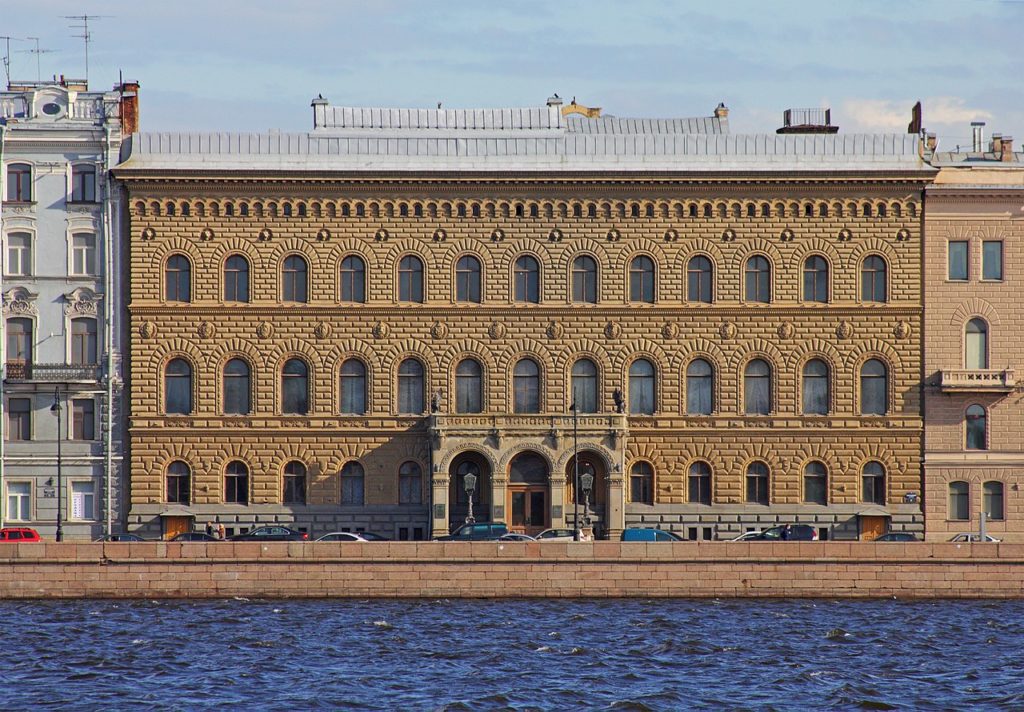
Vladamir Palace in St. Peterburg Russia is another great example of Renaissance Revival Architecture. It is one of the many 19th-century palaces found throughout St. Petersburg, built during the peak of the Russian Empire. Work began on the building in 1867, and it was inspired by older structures from the Italian Renaissance such as the Medici Palace in Florence. The same geometric stonework on the front elevation of Vladimir Palace can be found throughout many different Revival-era buildings.
11. New York City Hall – New York City, New York, United States
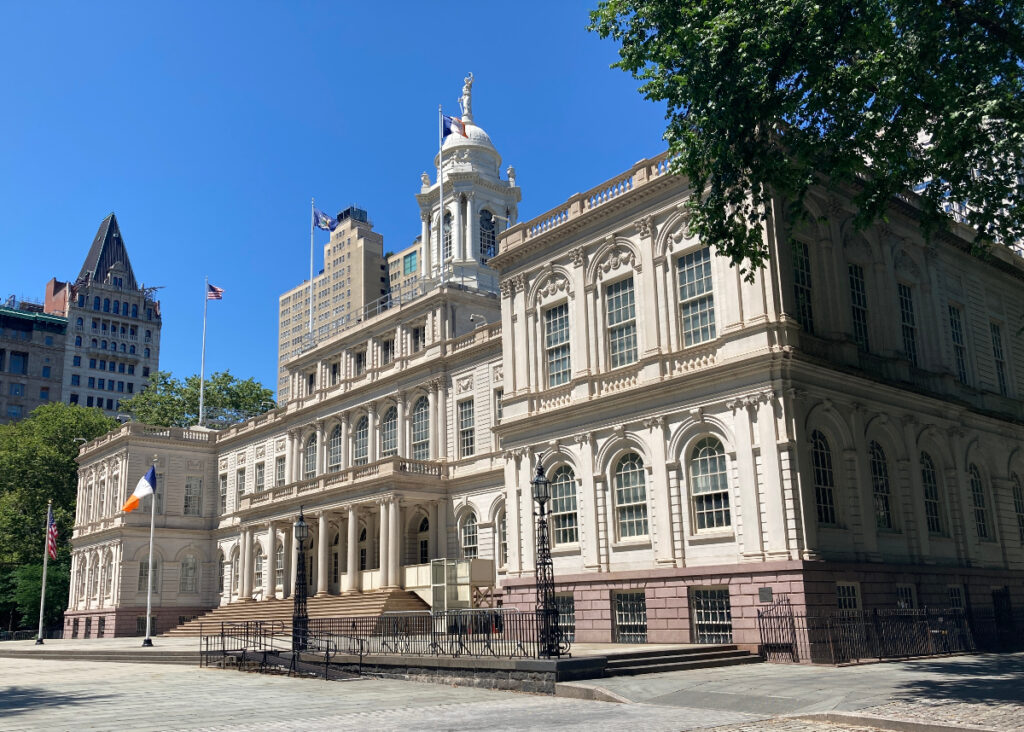
New York City Hall is a building in downtown Manhattan that houses the local government of New York City. It was completed in 1812, but it saw many renovations and expansions throughout the 1800s. The building’s exterior embodies many of the key ideas behind Renaissance Revival Architecture. Throughout the facade, you can see different classical design elements in addition to the use of rhythm, repetition, symmetry, and proportion. Today New York City Hall is among the lesser-known buildings on Manhattan Island, but it’s still a great example of the many Revival Style buildings located within NYC.
12. Hungarian State Opera House – Budapest, Hungary
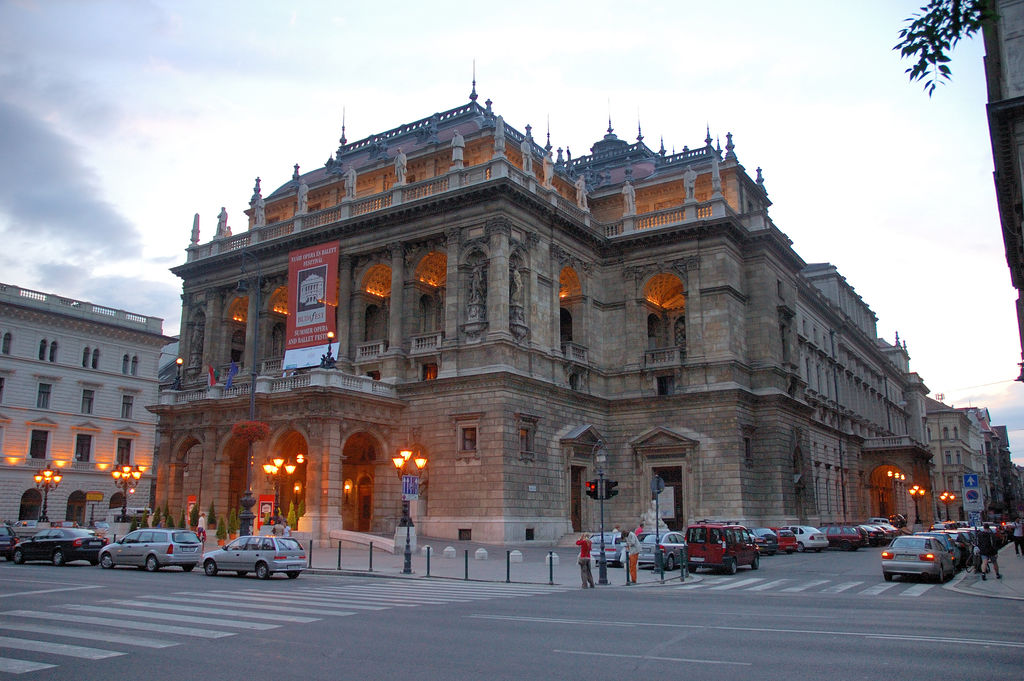
Budapest became a strong regional power during the height of the Autro-Hungarian Empire. At this time, it saw a large building boom, particularly leading up to the 1896 Millennium Exhibition of Budapest. The Hungarian State Opera House was one of many impressive structures completed in Budapest during the late 19th century, and it was built to rival other opera houses in cities like Paris and Vienna. The Hungarian State Opera House is decorated with an assortment of Renaissance-style Statues and it also has many other elements from Renaissance Architecture.
13. Boston Public Library – Boston, Massachusetts, United States

Mckim, Mead, and White was a prominent architecture firm that was active throughout the Revival Period. Some of the world’s greatest works of Revival Architecture were designed by Mckim, Mead, and White, and one of their most popular projects was the main Public Library building of Boston, Massachusetts. The BPL was completed in 1895 and was designed in the Renaissance Revival Style. The architects drew a lot of their inspiration from the Sainte-Geneviève Library in Paris, which was completed in 1851. Today, the BPL is one of the most iconic buildings in all of Boston, and it’s positioned overlooking Copley Square, one of the city’s most beloved public spaces.
14. Hôtel de Ville – Calais, France
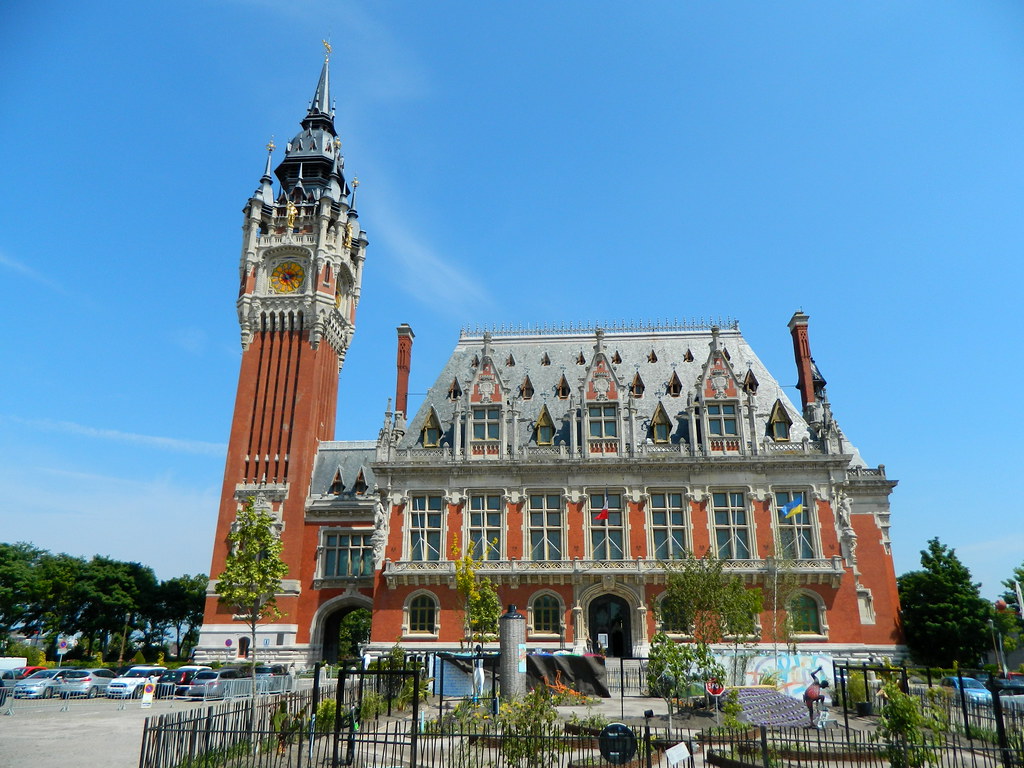
Similar to the Hôtel de Ville in Paris (#3 on this list) the Hôtel de Ville of Calais is an important work of Renaissance Revival Architecture. Completed in 1925 it houses the local government for Calais, a small coastal city located in northern France near the border with Belgium. The building is an interesting example of Renaissance Revival design elements mixed with traditional architectural features found in the surrounding area. Thanks to this, the Hôtel de Ville de Calais also bears a strong resemblance to the Peace Palace in The Hague.
15. Royal Danish Theater – Copenhagen, Denmark
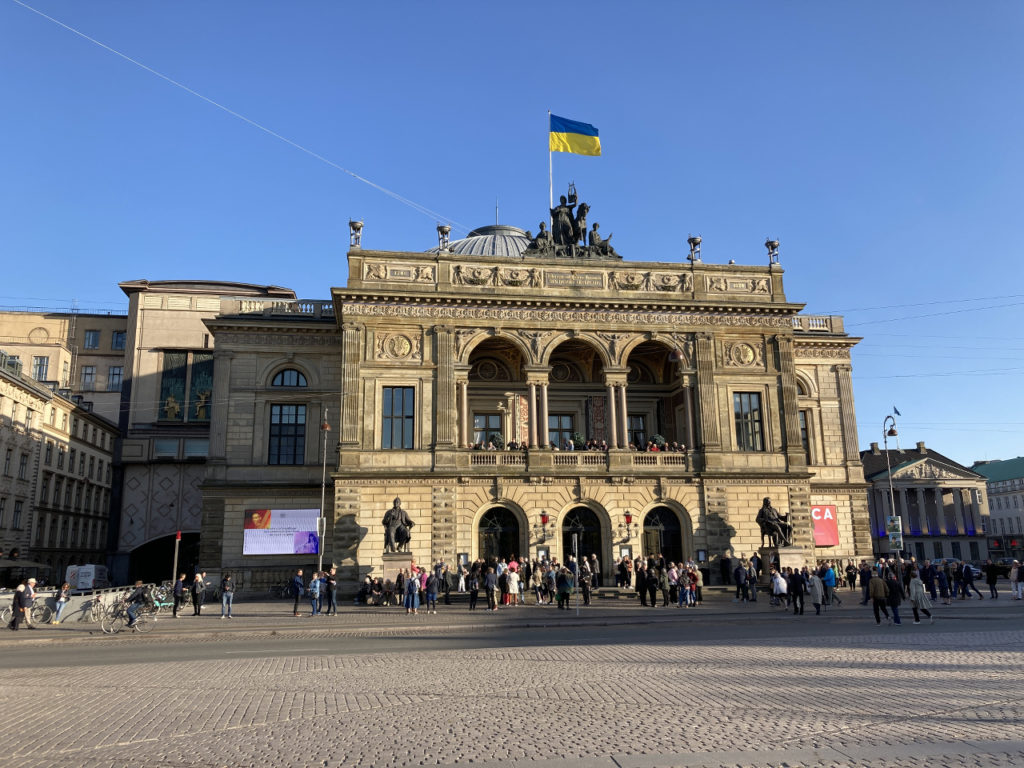
Completed in 1874, the Royal Danish Theater is an impressive work of Renaissance Revival Architecture in Copenhagen. It was designed by the most famous architect in Copenhagen during the Revival Age, Vilhelm Dahlerup. His career took off during the late 19th century, and he designed several of the most impressive buildings in Copenhagen, including the Glyptotek and the National Gallery. Today, the Royal Danish Theater still holds live events and it’s one of the city’s most popular performing arts venues.
Like Architecture of Cities? Sign up for our mailing list to get updates on our latest articles and other information related to Architectural History.
16. Highclere Castle – Highclere, England, UK
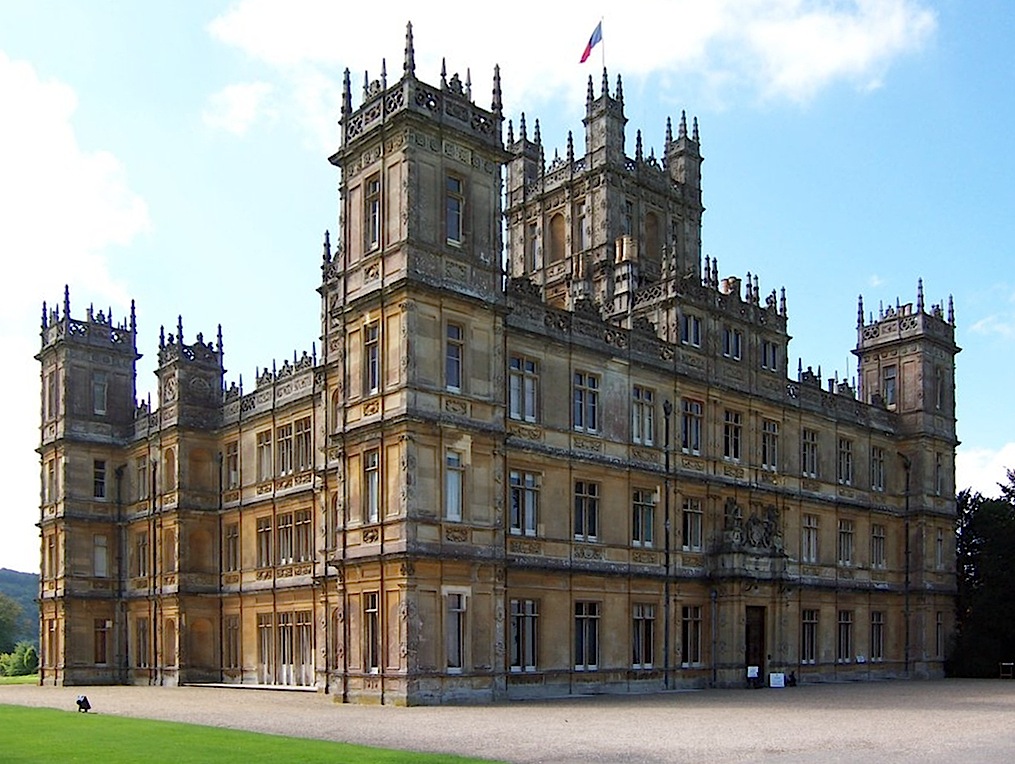
Highclere Castle is a Renaissance Revival-style residence in a prominent English estate in Hampshire County. The original house was built in the late 1600s, but it was completely overhauled in the mid-1800s. These renovations added newer comforts to the home, and they were completed in a style known in England as Jacobethan Revival. Highclere Castle resembles many similar mansions built throughout the United Kingdom. Most of these are owned by billionaires, prominent aristocrats, and the English Royal Family.
17. Rudolfinum – Prague, Czech Republic
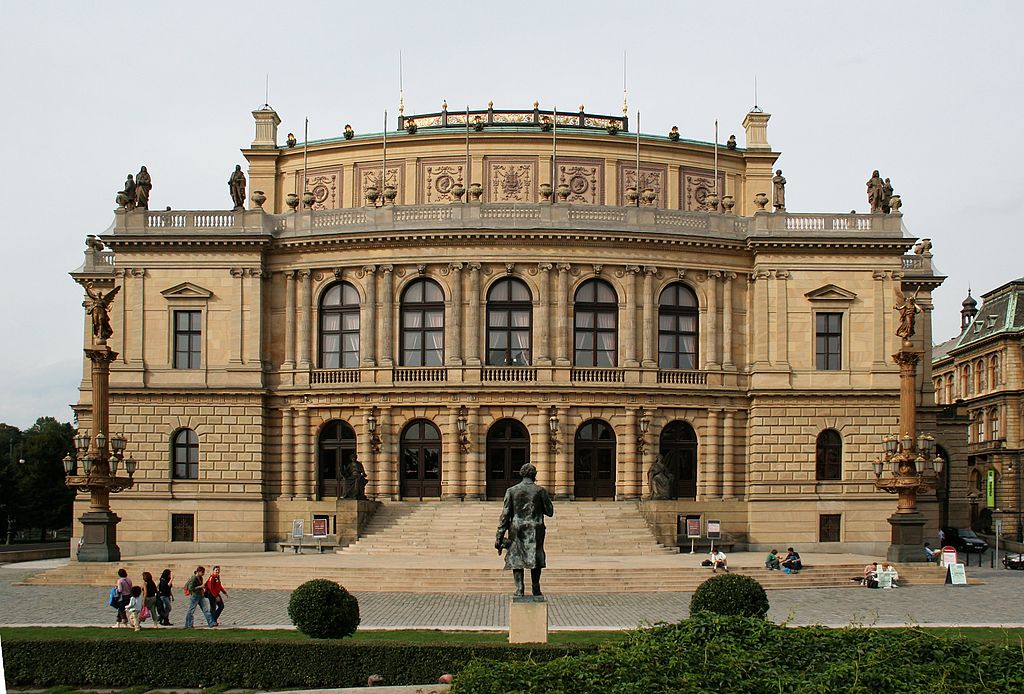
The Rudolfinum is another great example of Revival Architecture within Prague. It was built in the Neo-Renaissance Style, borrowing most of its characteristics from older Renaissance buildings. It opened its doors in 1885 and has been a renowned music auditorium ever since. The Czech Philharmonic Orchestra plays regularly within the Rudolfinum, and the space also holds other events and concerts. The front facade of the building faces a busy road that aligns with the Manes Bridge, one of several bridges over the Vltava River that connect both sides of Prague.
18. Museum of Decorative Arts – Prague, Czech Republic
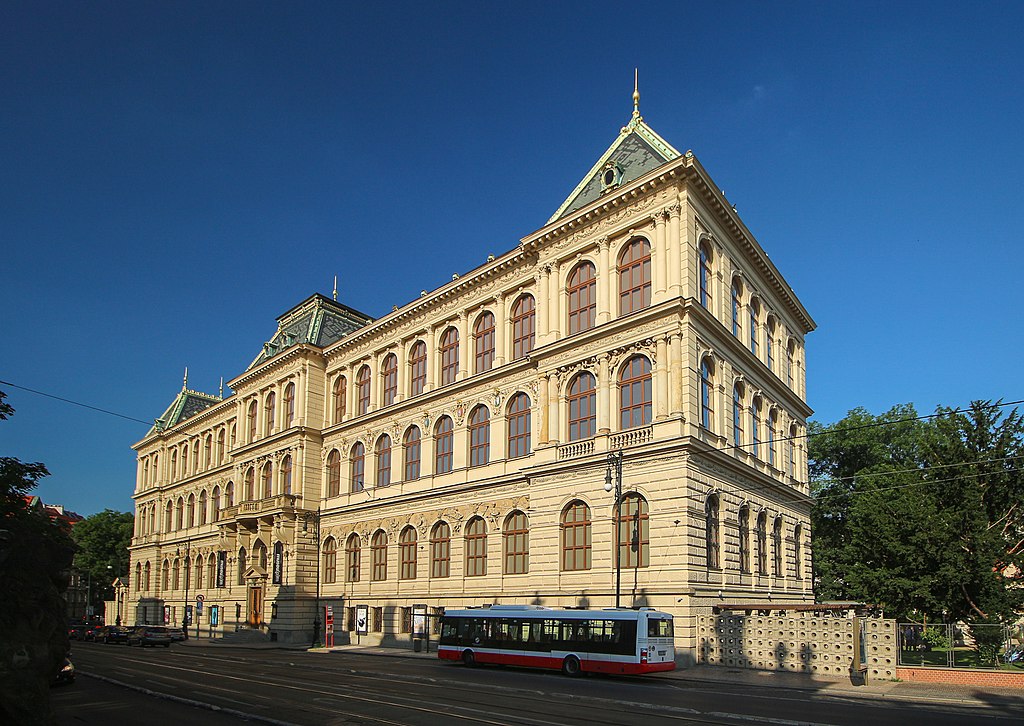
Completed in 1899, the Museum of Decorative Arts is another impressive building located right across the street from the Rudolfinum. Its symmetrical and rhythmic facade is a great example of the NeoRenaissance Style. The museum contains an interesting assortment of mostly Czech artifacts. Displays are focused mostly on interior decor, and they highlight many everyday objects such as tables, chairs, dressers, and vases. The museum also spans centuries, with works dating from the medieval period up until the modern age.
19. Galleria Nazionale d’Arte Moderna – Rome, Italy

The Galleria Nazionale d’Arte Moderna is an impressive example of Renaissance Revival Architecture located in the heart of Rome. Rome is, of course, famous for its abundance of art and museums, including the renowned Vatican Museums. Although not as large and frequently visited as the Vatican, the Galleria Nazionale d’Arte Moderna is still one of Rome’s top museum experiences. Many visitors love the museum specifically because it showcases modern art, which contrasts with the more traditional artworks found throughout the rest of Rome.
20. National Gallery of Denmark – Copenhagen, Denmark
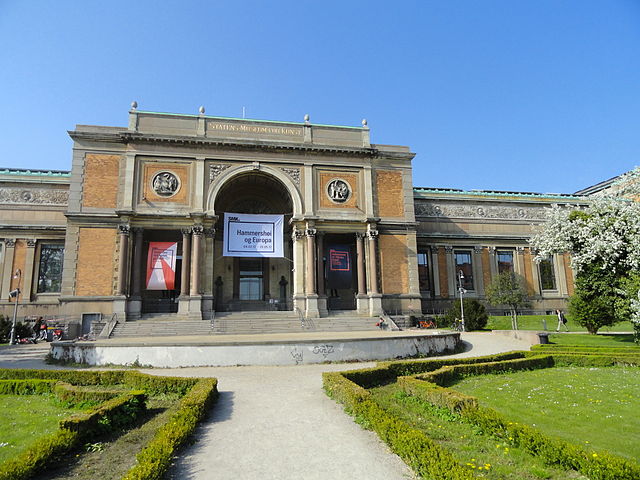

The National Gallery of Denmark is an iconic building located in central Copenhagen. It was designed by Vilhelm Dahlerp and was completed in 1896. It’s located on the edge of Copenhagen’s historic center, where the northern ramparts of the city were once located. The building is designed in the Renaissance Revival Style, replicating many older buildings found in Italian cities like Florence, Venice, and Rome. Today the National Gallery of Copenhagen is filled with a large collection of art, with many pieces once belonging to the Danish Royal Family.
21. Old Treasury Building – Melbourne, Australia

Melbourne is one of Australia’s largest cities, and it saw a major building boom during the late 19th century. As a result, Melbourne hosts a variety of Revival-style buildings, including a very famous NeoGothic Cathedral. The Old Treasury Building is the city’s greatest example of Renaissance Revival Architecture. It hosts all of the typical Renaissance design elements, including Classical Columns, Pediments, Round Arches, and symmetry.
22. Rijksmuseum – Amsterdam, Netherlands
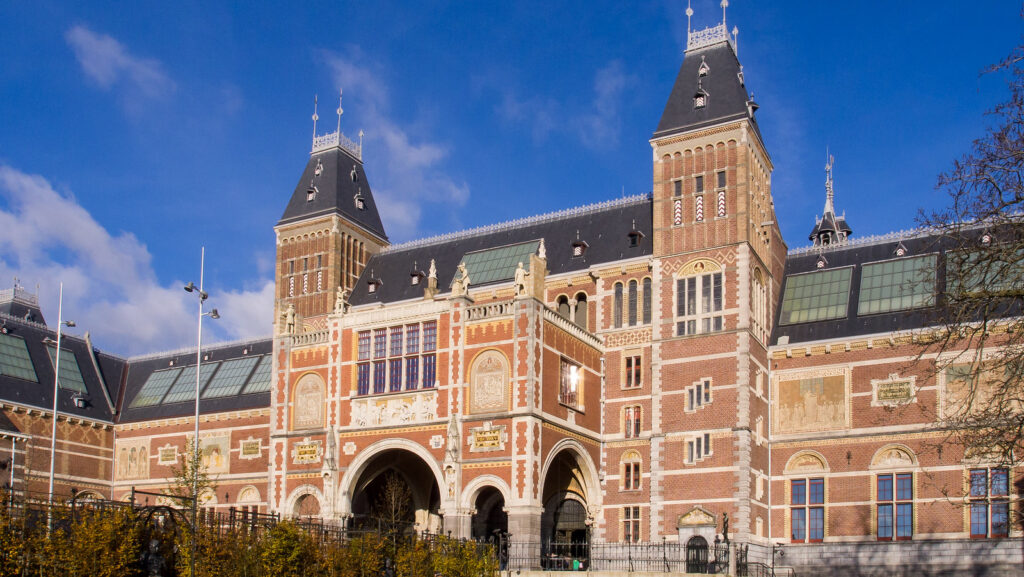
One of the largest museums in all of the Netherlands, the Rijksmuseum is a work of Renaissance Revival Architecture located in central Amsterdam. The museum is known for its impressive collection of paintings, sculptures, and other artifacts, many of which were all completed by Dutch artists and craftsmen. The museum houses famous works by Dutch masters such as Rembrandt and Vermeer. The Rijksmuseum is one of the most visited buildings in all of Amsterdam, and it continues to be one of the greatest Revival Style structures in the Netherlands.
23. National Building Museum – Washington DC, United States

The National Building Museum is a large Renaissance Revival Building located in Washington DC. Its design replicates many elements found in Palazzo Farnese, which is a Renaissance Palace in Rome designed by Michelangelo. The museum was completed in 1887, during the heart of the Revival Age in Architecture. Today, the National Building Museum contains a series of exhibits about architectural history in the United States, and it also hosts rotating exhibits designed by some of the world’s most well-known Architecture Firms.
24. Stockholm City Hall (interior) – Stockholm, Sweden
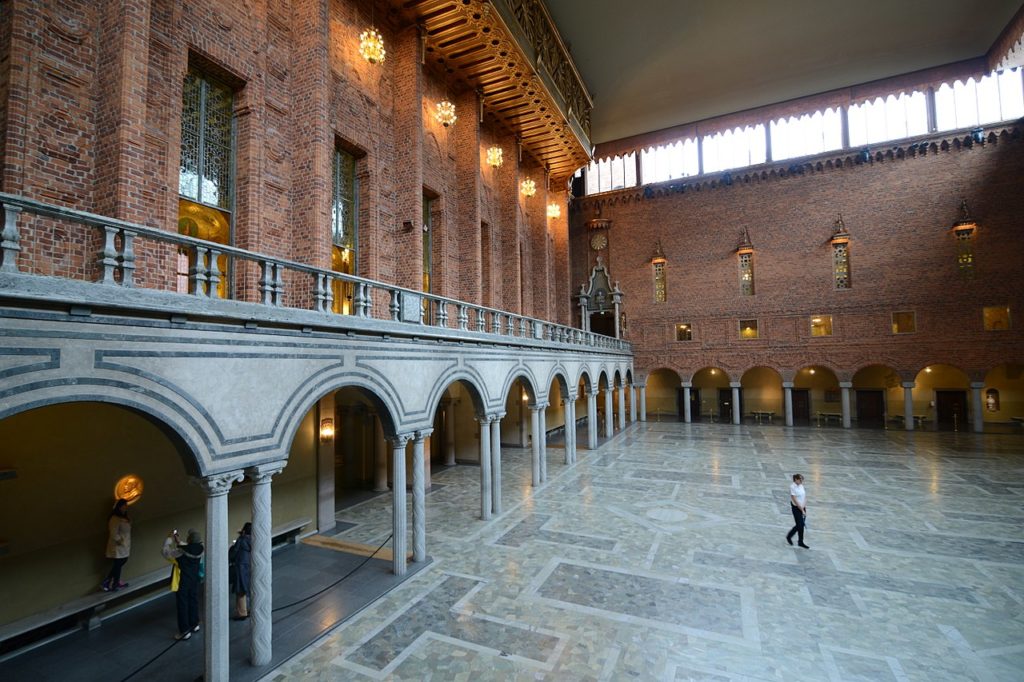
Stockholm City Hall was built over the course of 12 years, from 1911 to 1923. The building was designed in the National Romantic Style and is known for its use of Eclecticism. The image above shows the famous “Blue Hall” which was meant to replicate a Venetian-style palace. Here, you can see the use of symmetry, proportion, and repetition which were all key elements in Renaissance Revival Architecture. Each year this room hosts the Nobel Prize Banquet, an event that honors all of the recipients of the Nobel Prize.
25. Zaragoza City Hall – Zaragoza, Spain
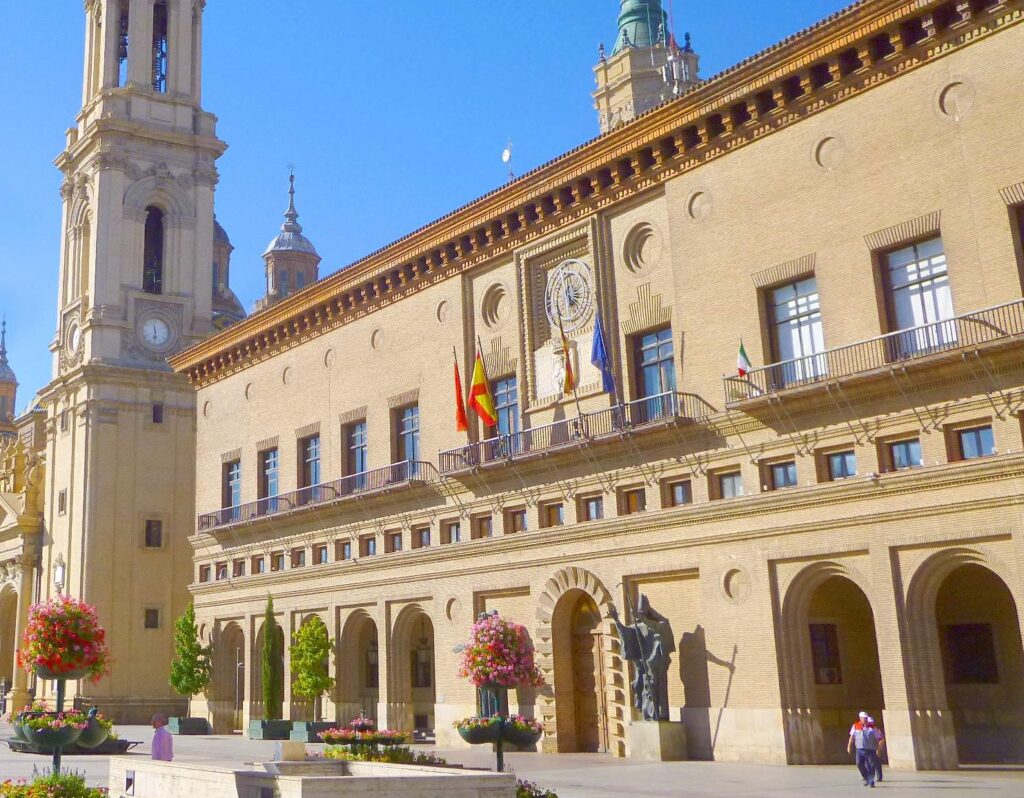
Located within the city’s main square Plaza del Pilar, Zaragoza City Hall is a prominent example of Renaissance Revival Architecture. It’s surrounded by other important buildings within the city of Zaragoza, including The Basílica de Nuestra Señora del Pilar and the Cathedral del Salvador. Zaragoza City Hall has a simple design, it’s a rectangular building with a symmetrical facade and a central courtyard. It’s designed in the same exact way as many Italian Villas located in cities like Florence, Rome, and Venice.
Renaissance Revival Architecture Today
The Renaissance was one of the most important art movements in world history, and Renaissance artists like Michelangelo and Leonardo Da Vinci are still highly regarded in modern times. The buildings of the Renaissance Revival Age were all designed to embody the same spirit and character that was popular during the Italian Renaissance. Various buildings such as the Vienna State Opera House and the Hôtel de Ville in Paris follow all of the principles within Renaissance Architecture, including balance, symmetry, proportion, and hierarchy. Many of the Renaissance Revival Buildings on this list are still vital parts of the communities that they serve, and they will continue to embody the spirit of the Renaissance Movement for centuries to come.
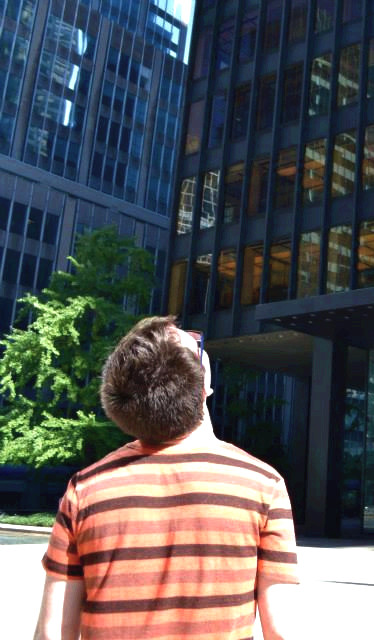
- About the Author
- Rob Carney, the founder and lead writer for Architecture of Cities has been studying the history of architecture for over 15 years.
- He is an avid traveler and photographer, and he is passionate about buildings and building history.
- Rob has a B.S. and a Master’s degree in Architecture and has worked as an architect and engineer in the Boston area for 10 years.
Like Architecture of Cities? Sign up for our mailing list to get updates on our latest articles and other information related to Architectural History.
